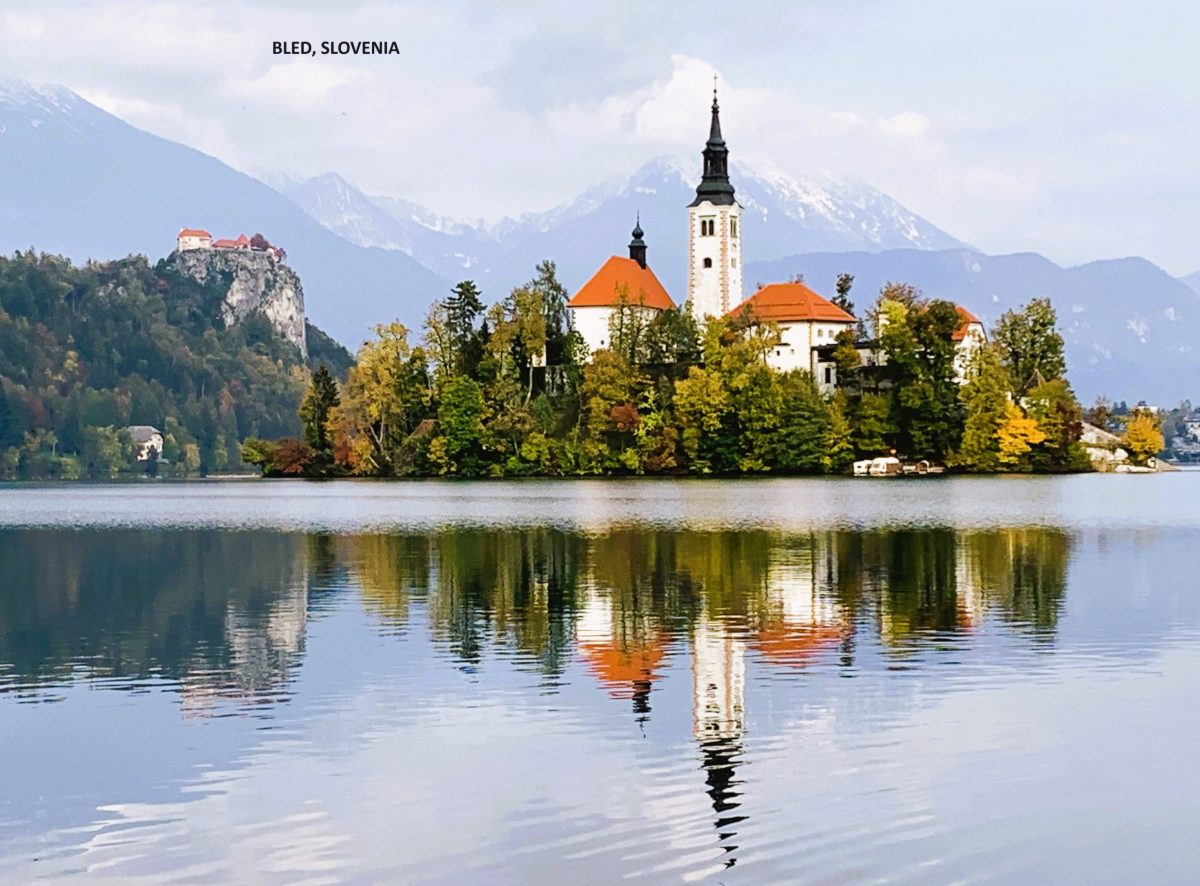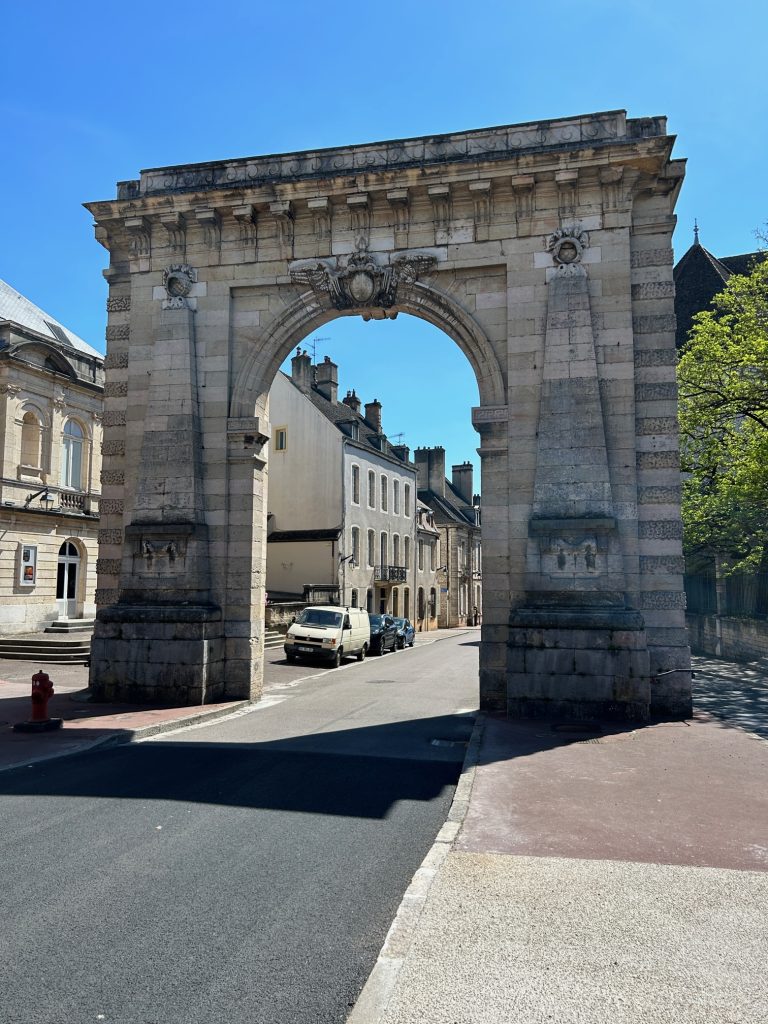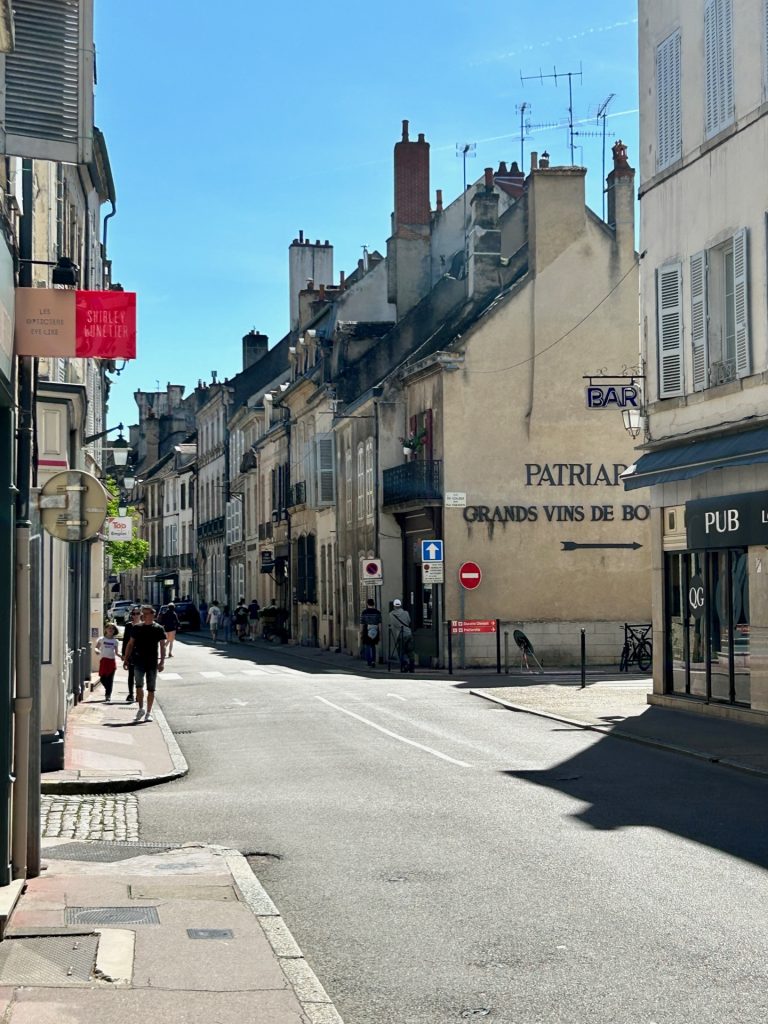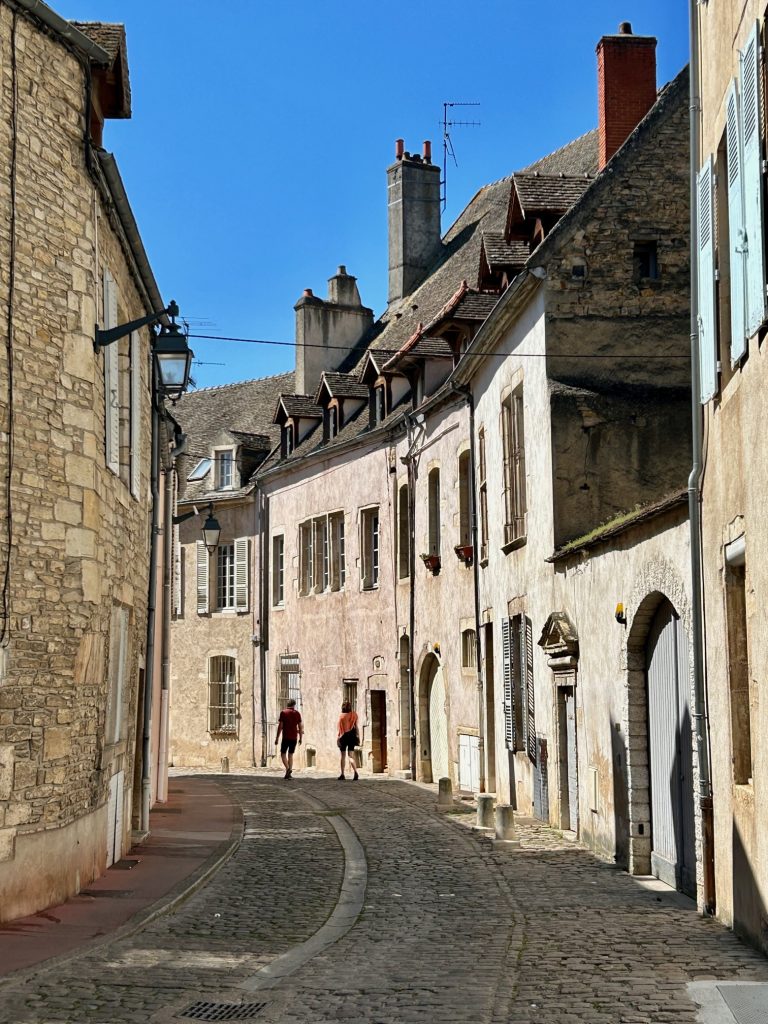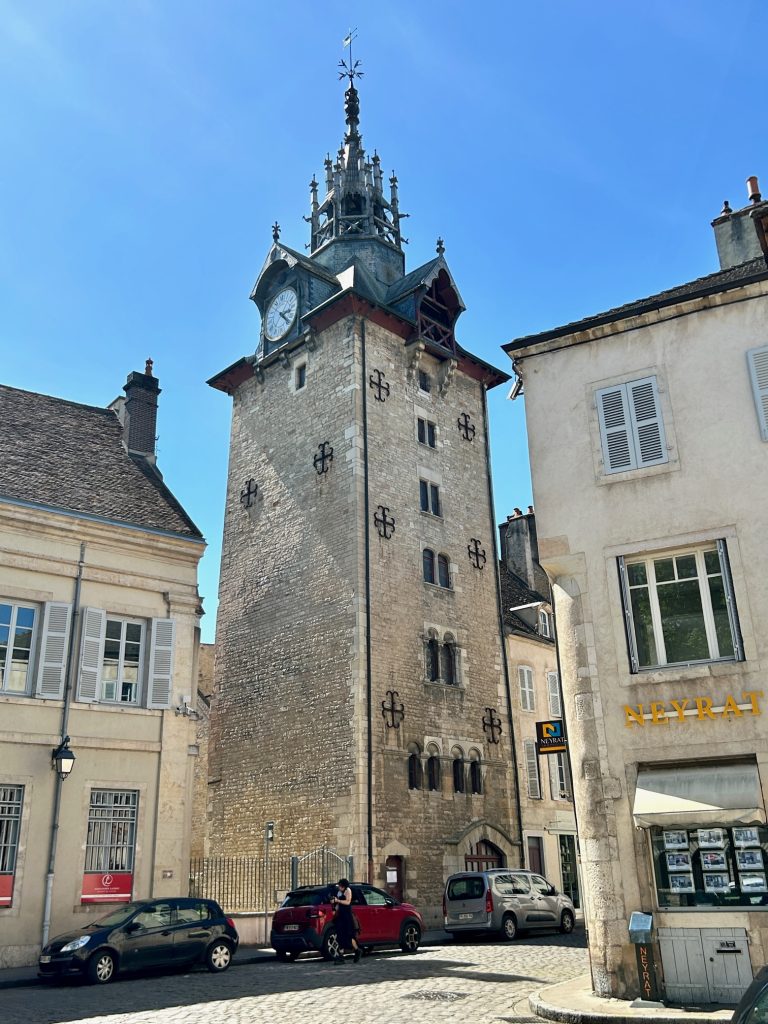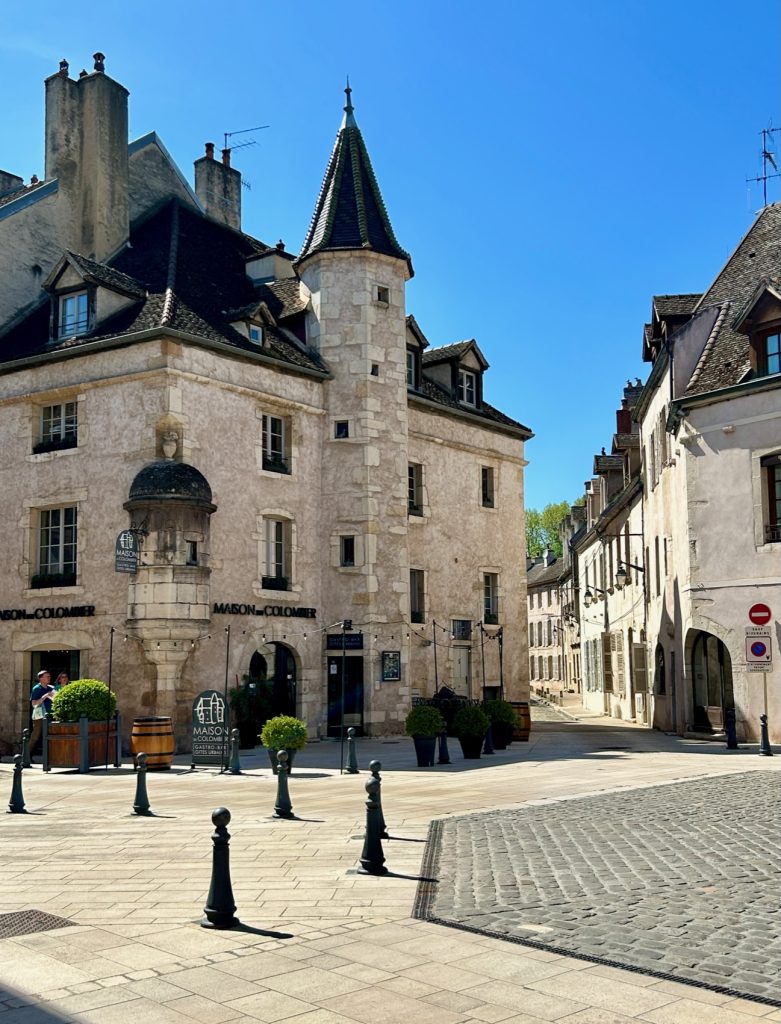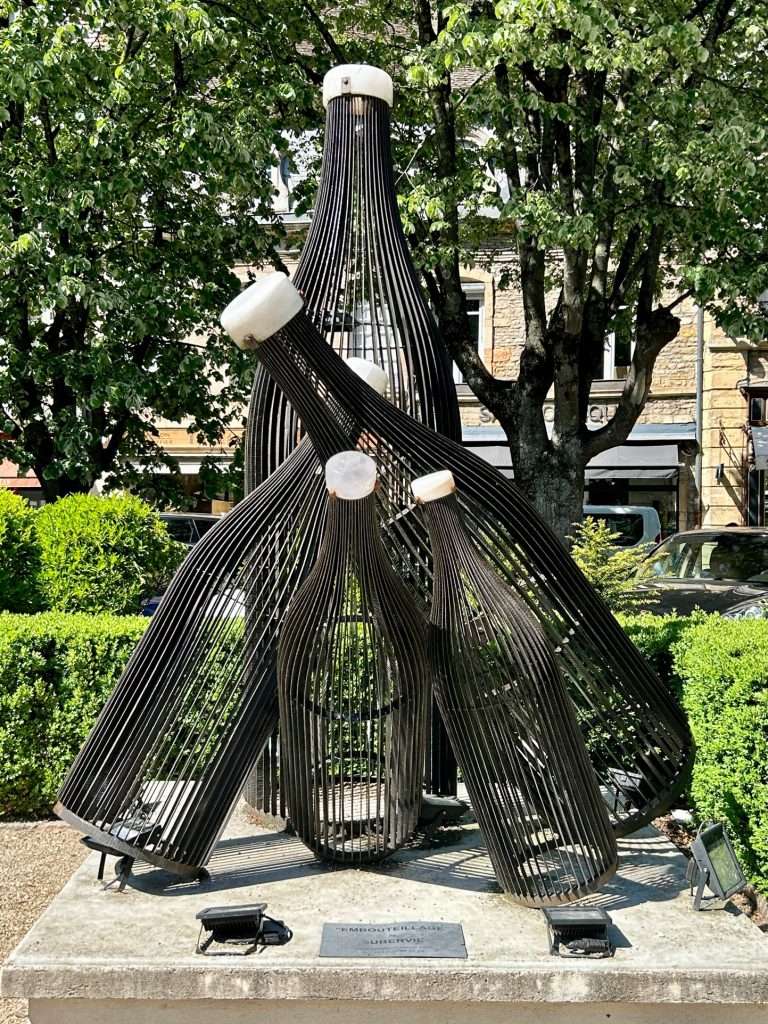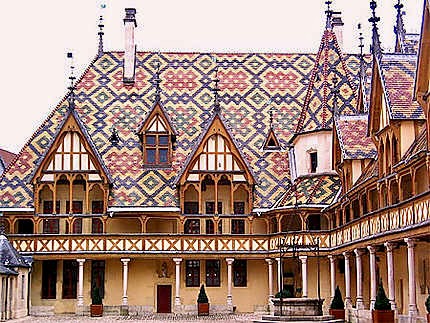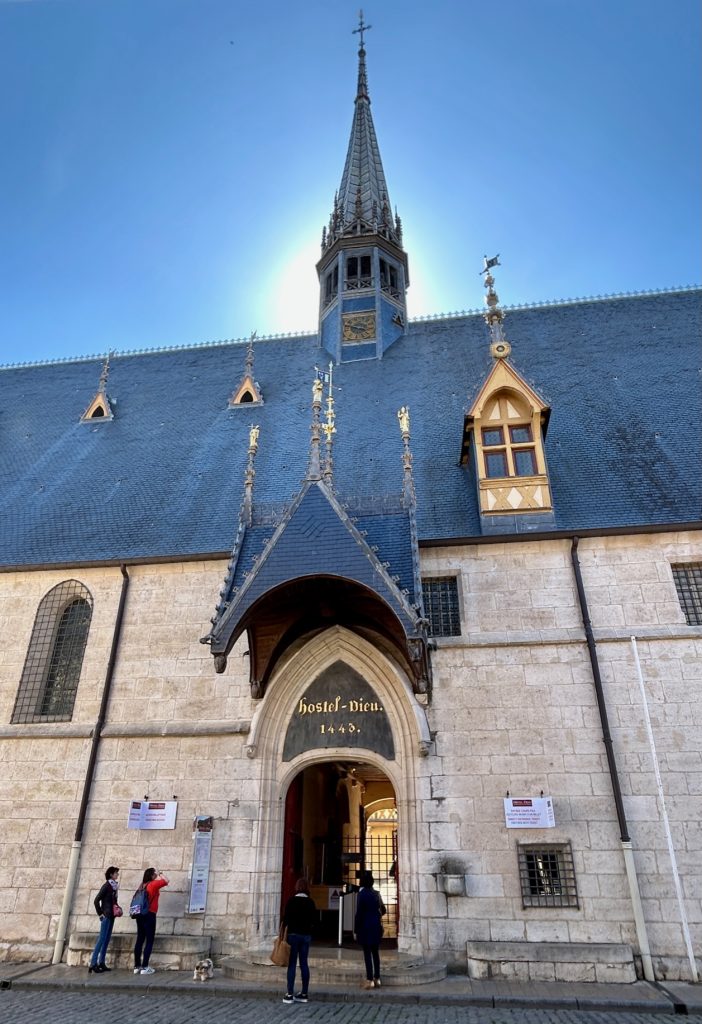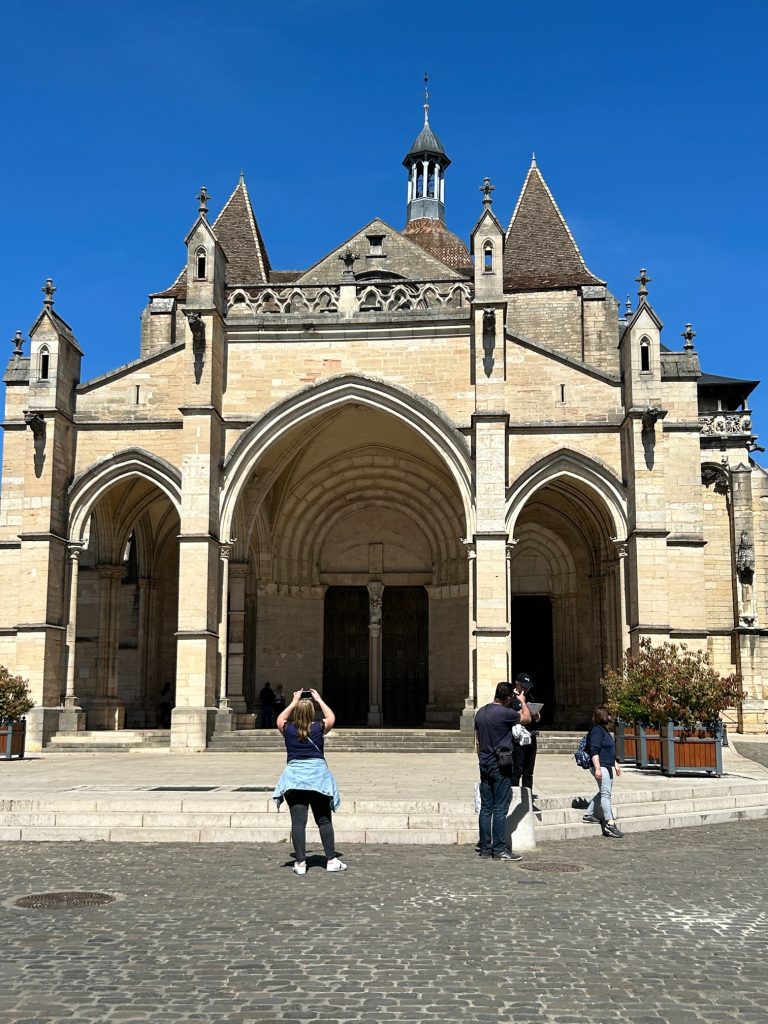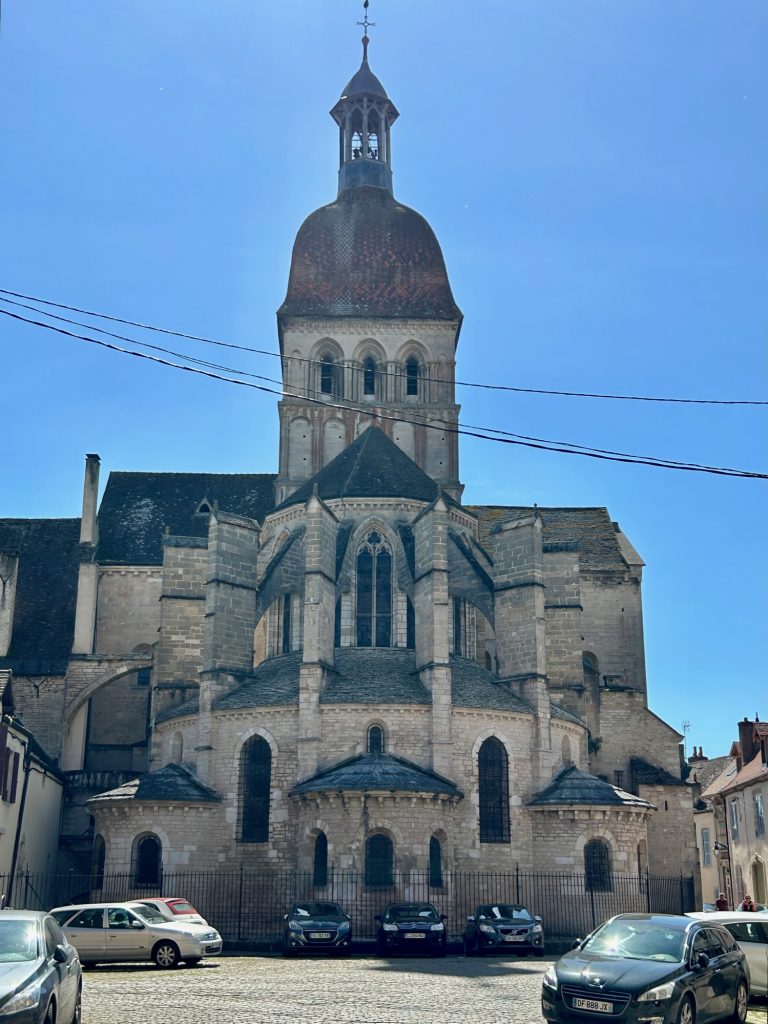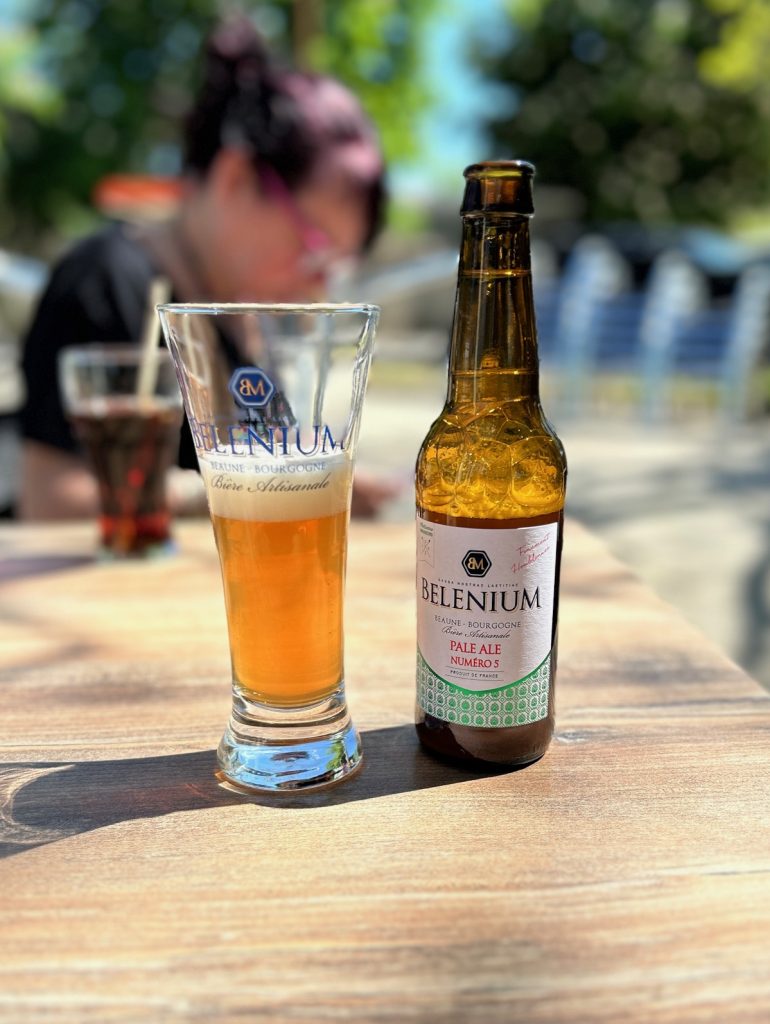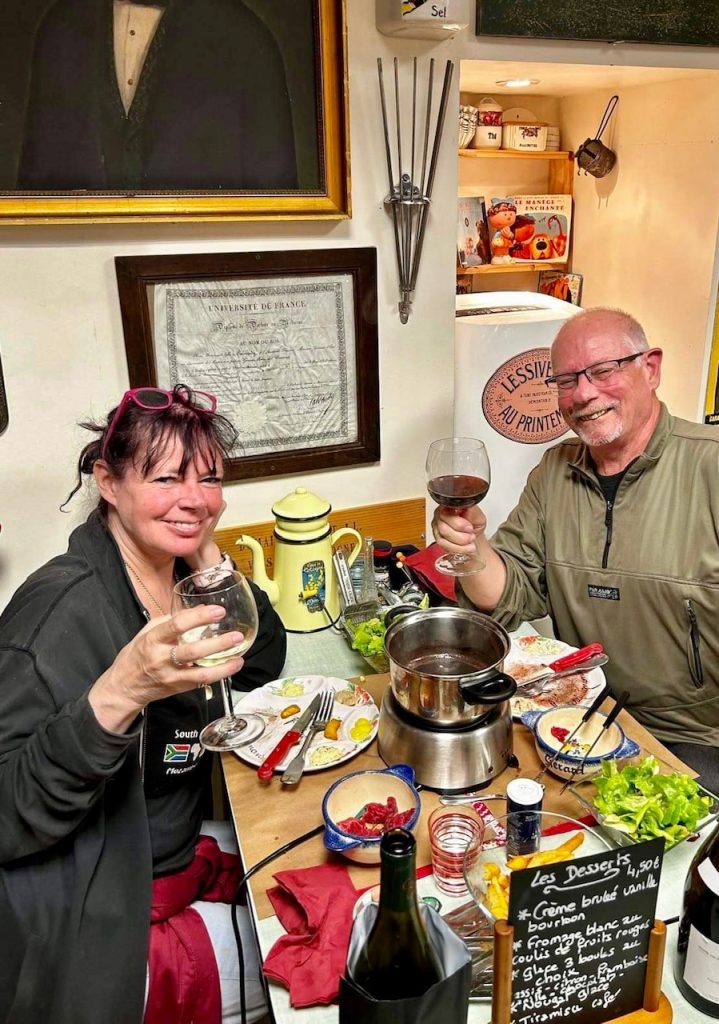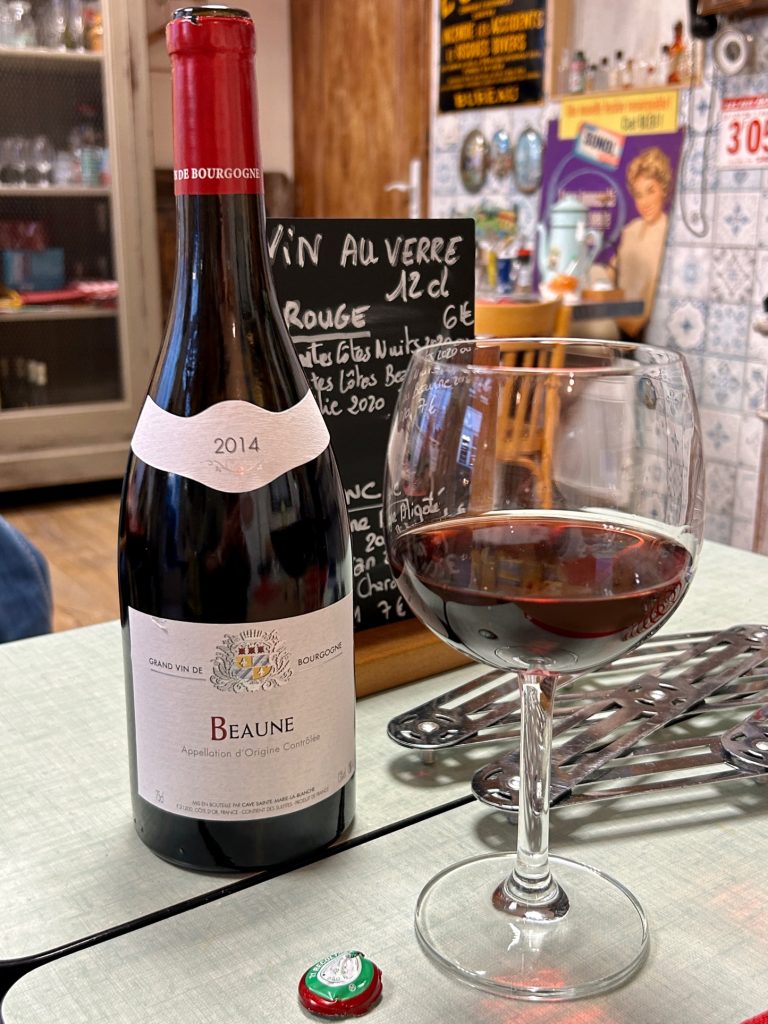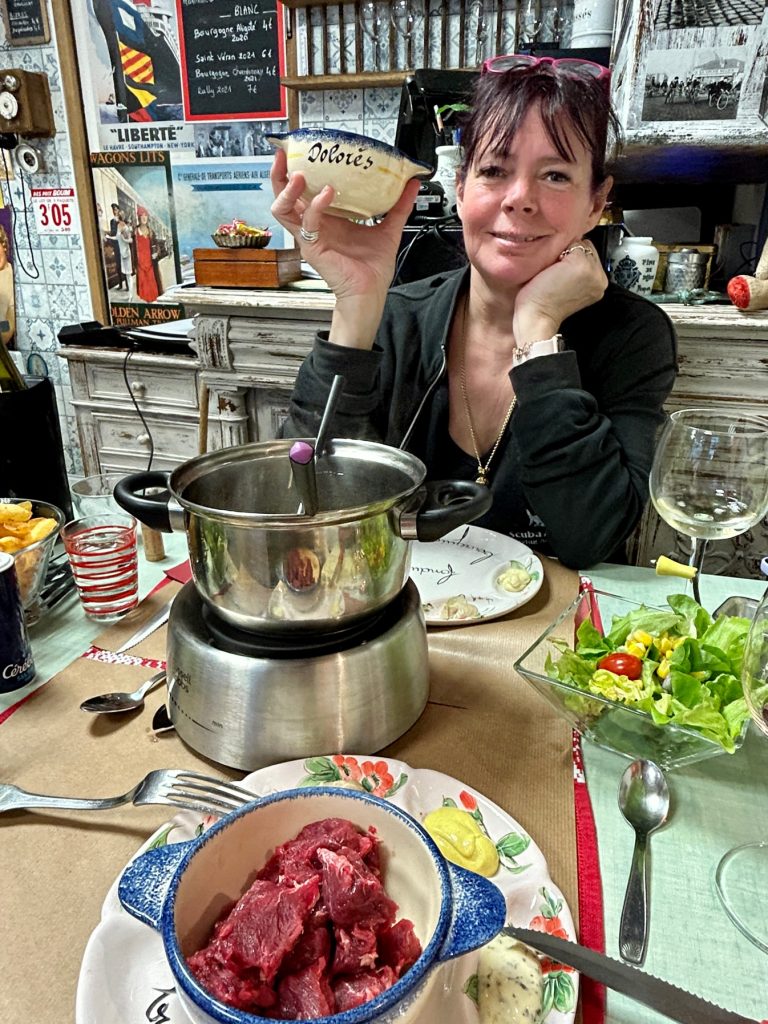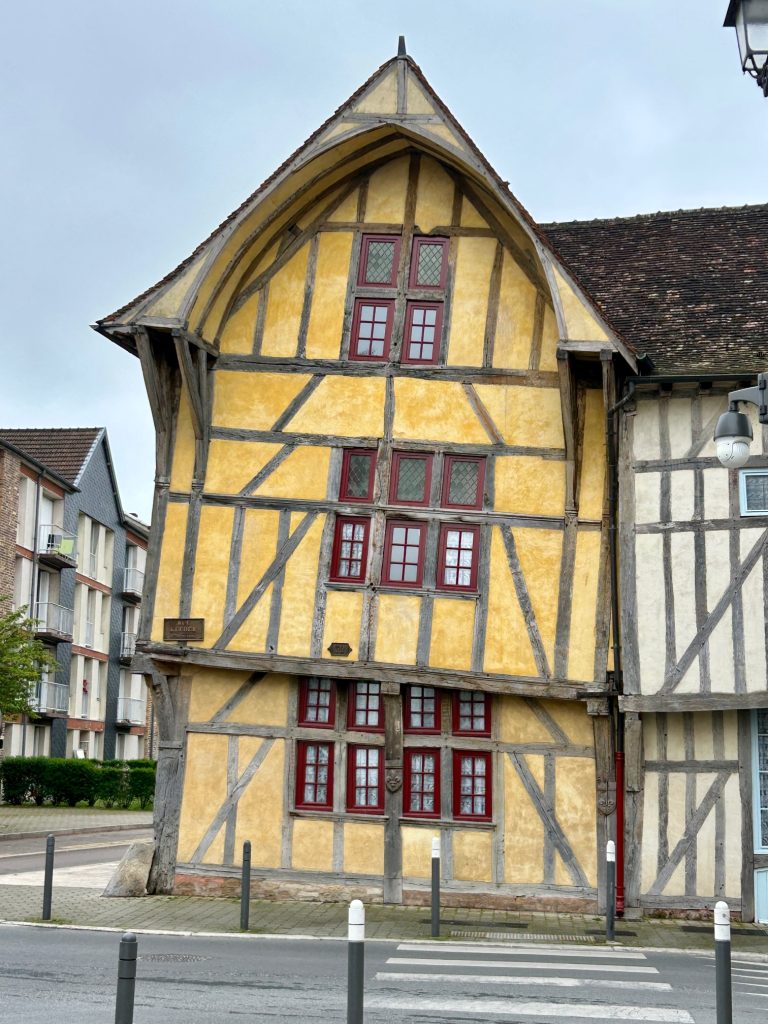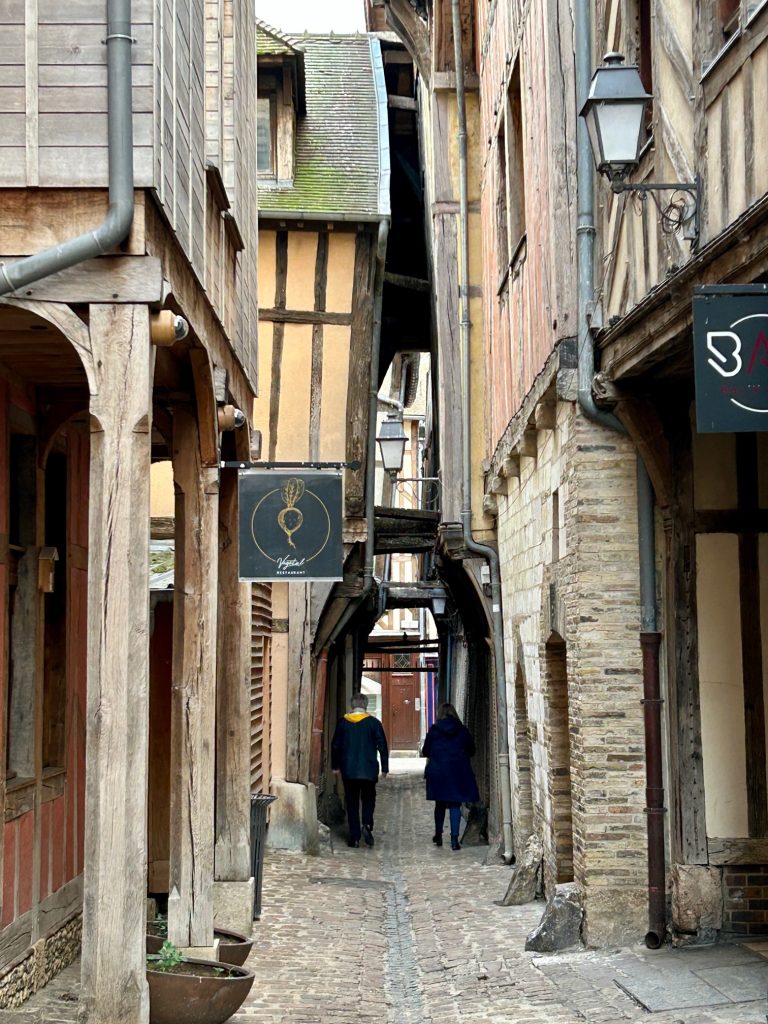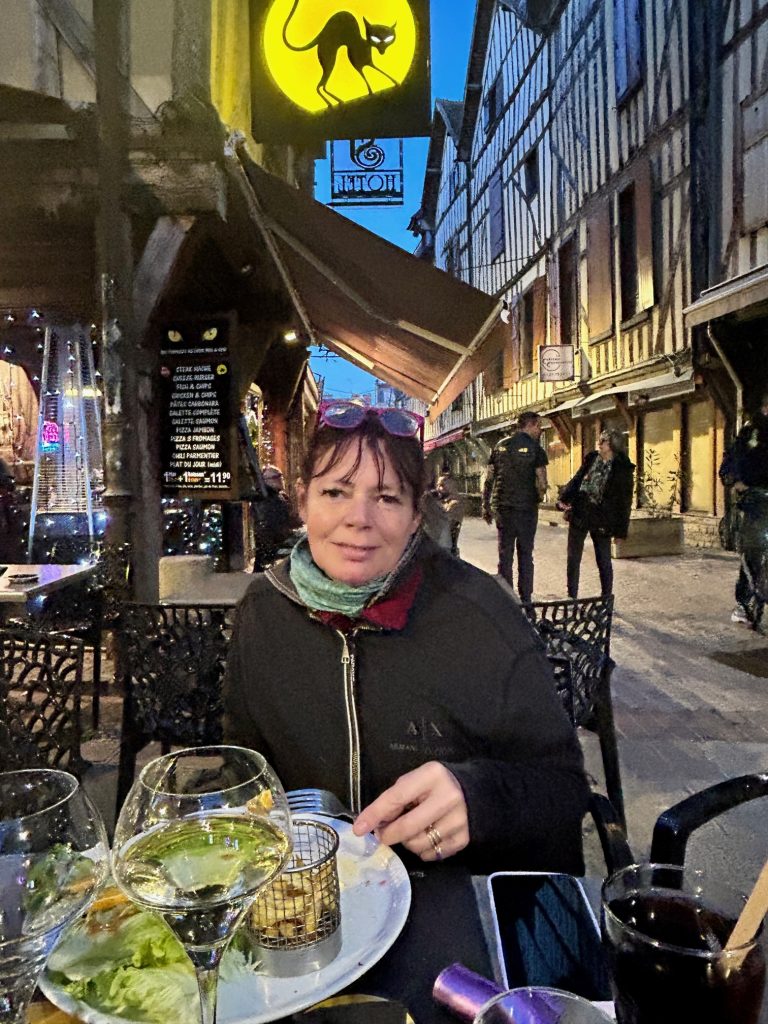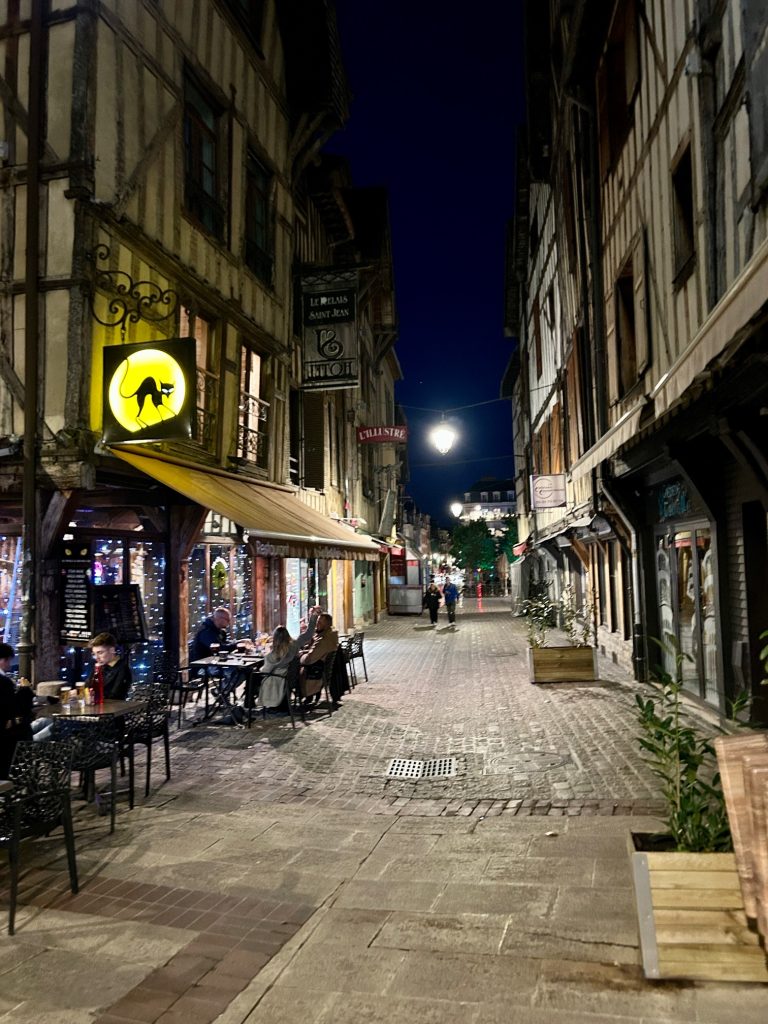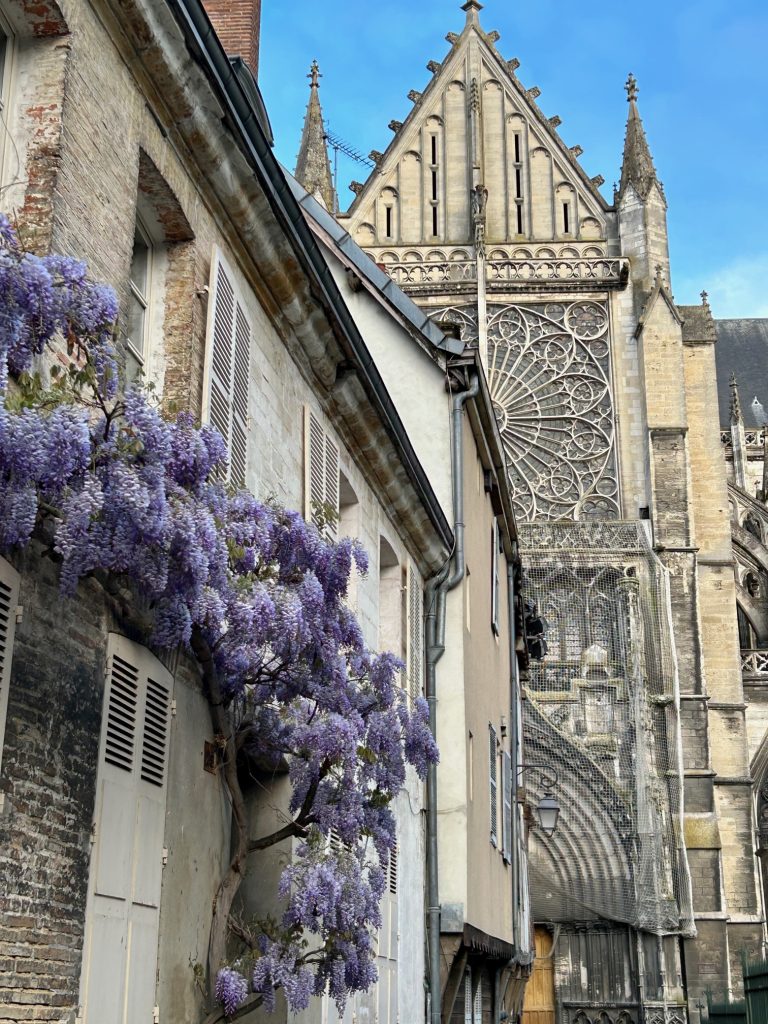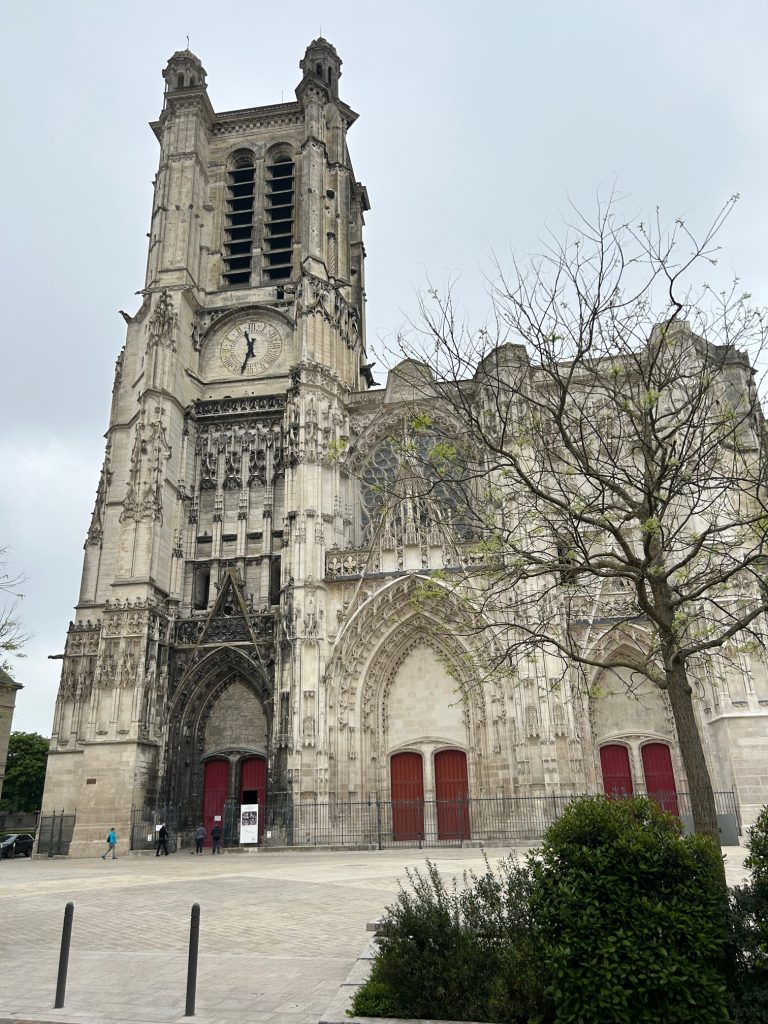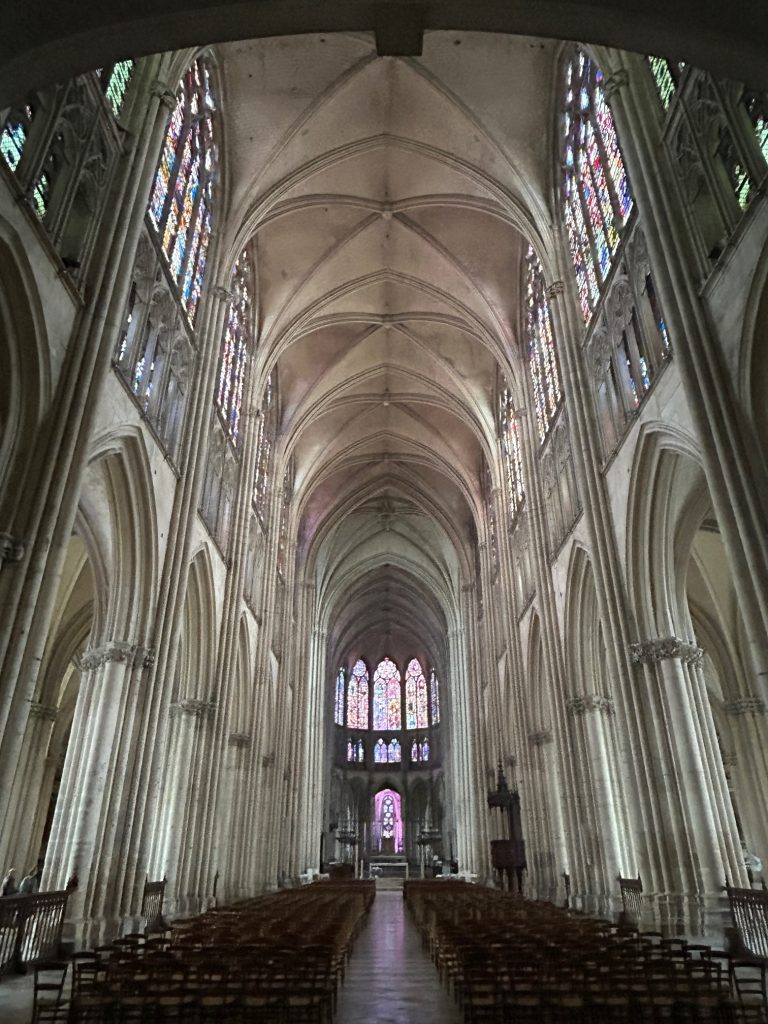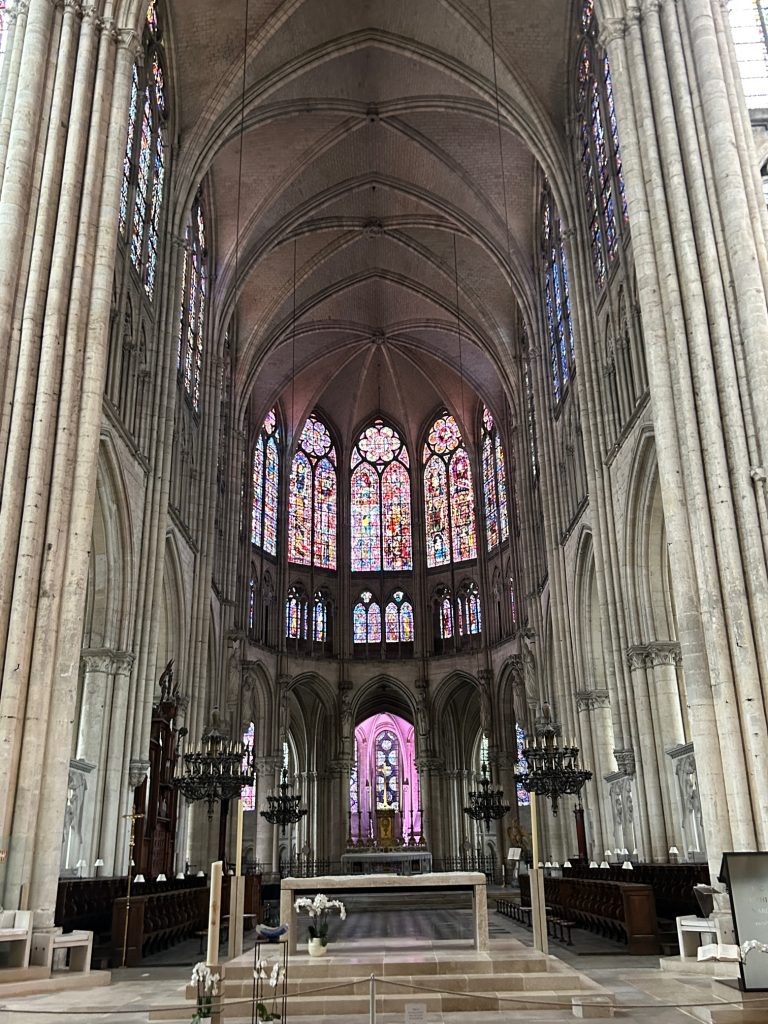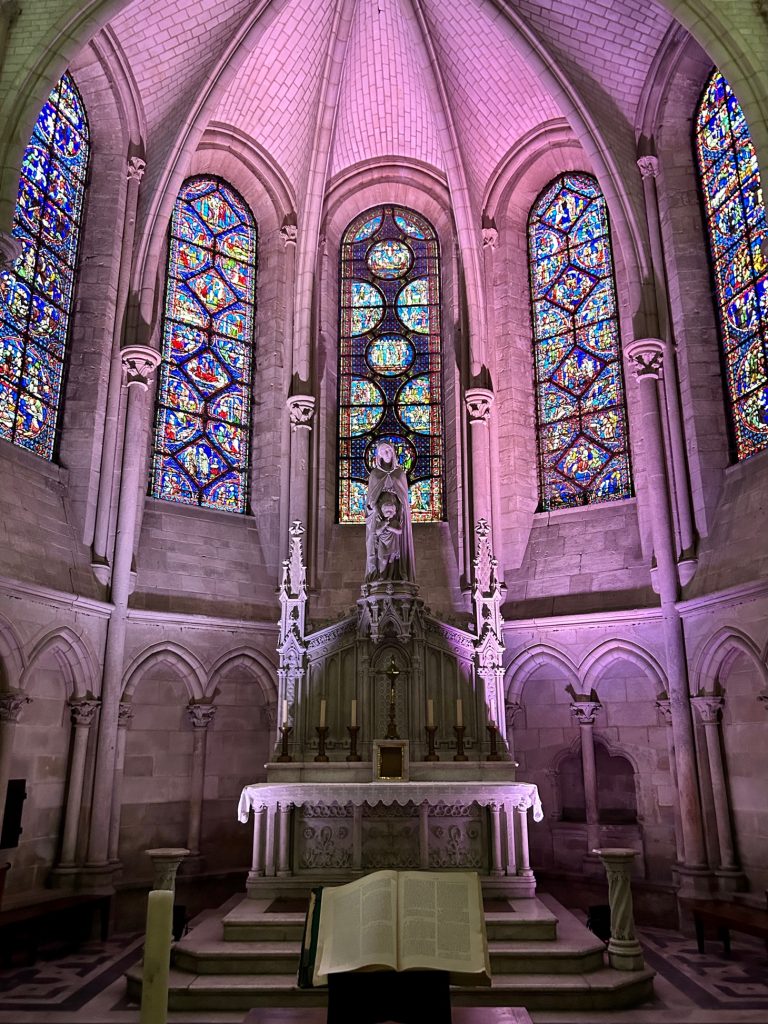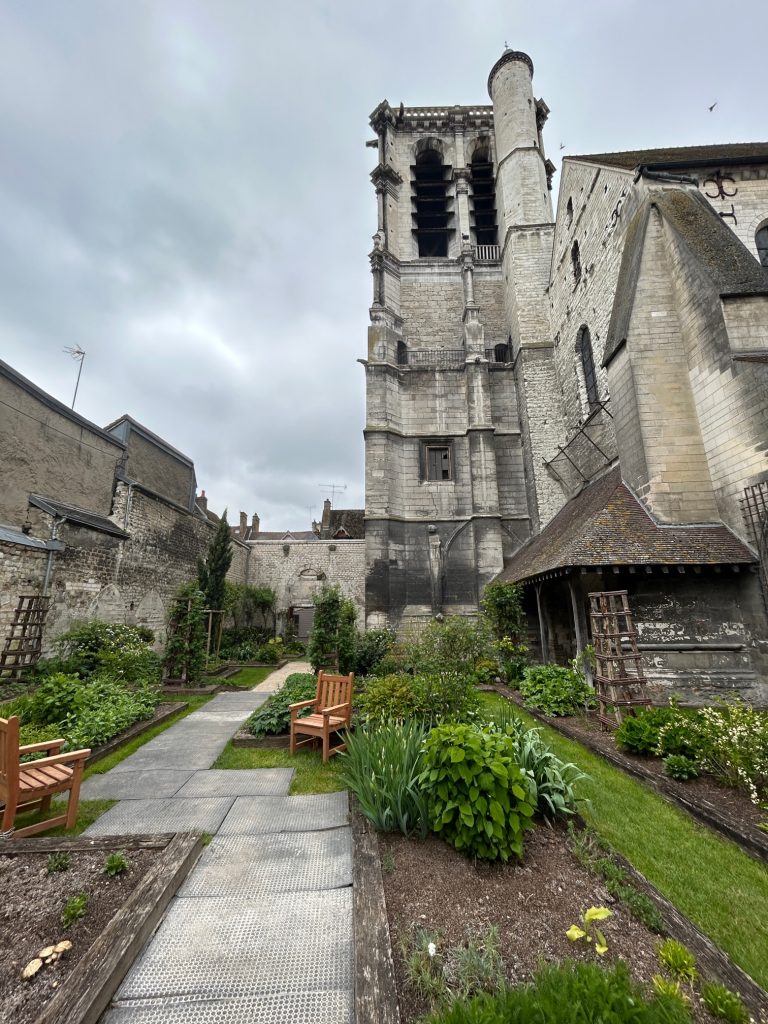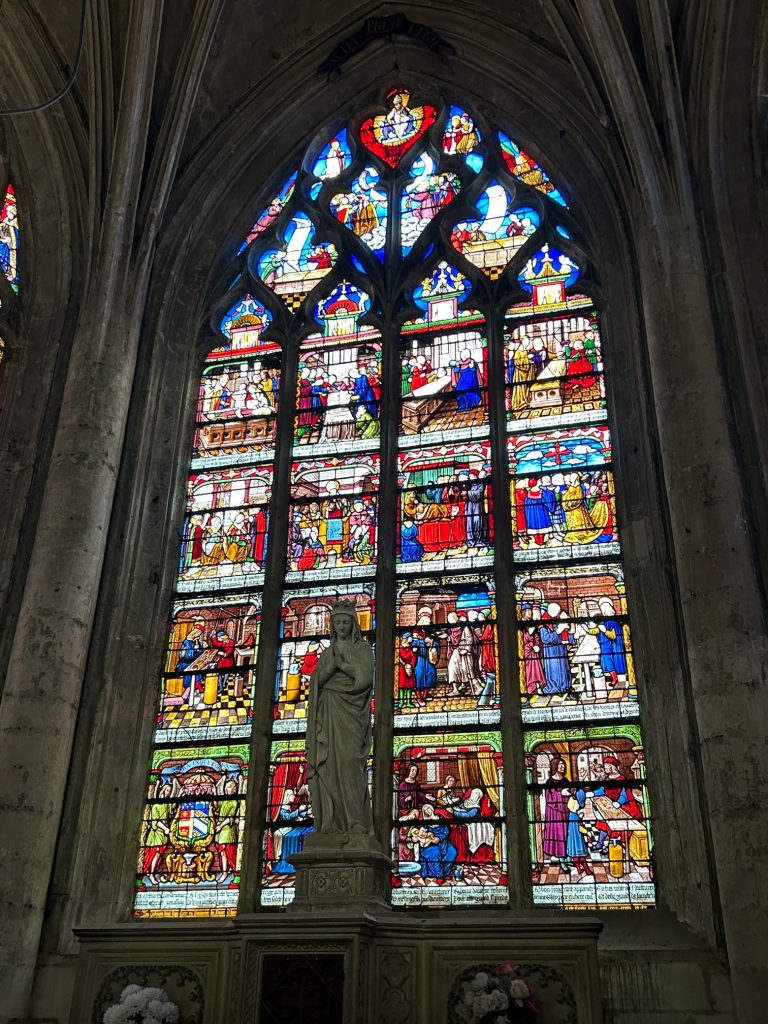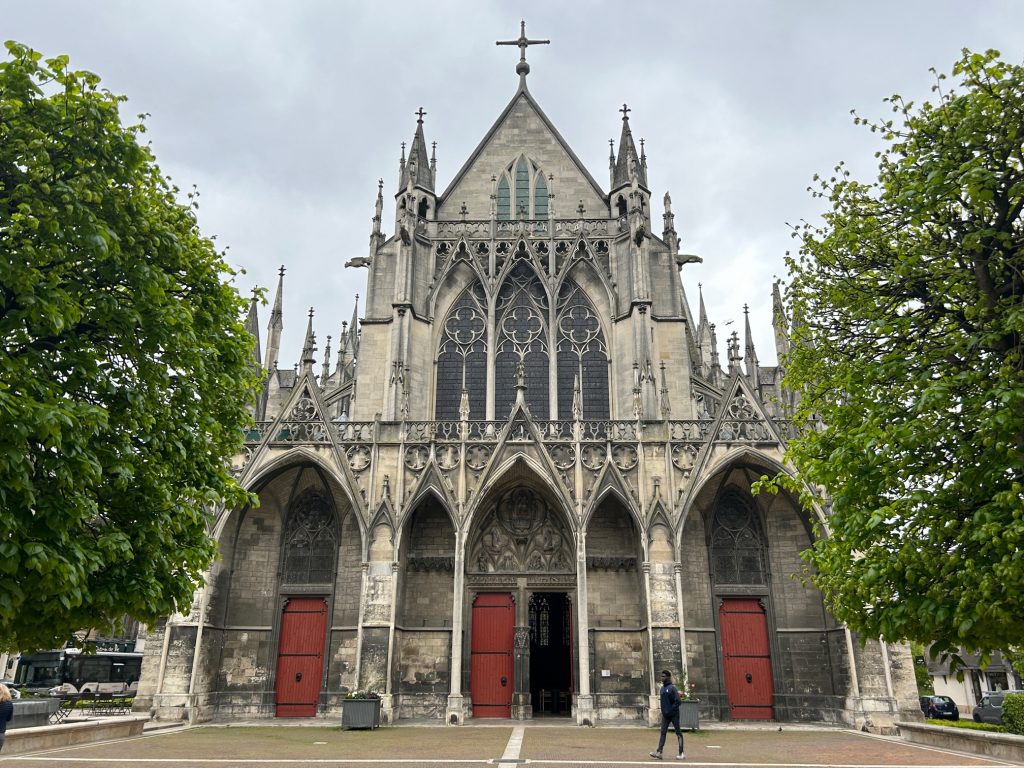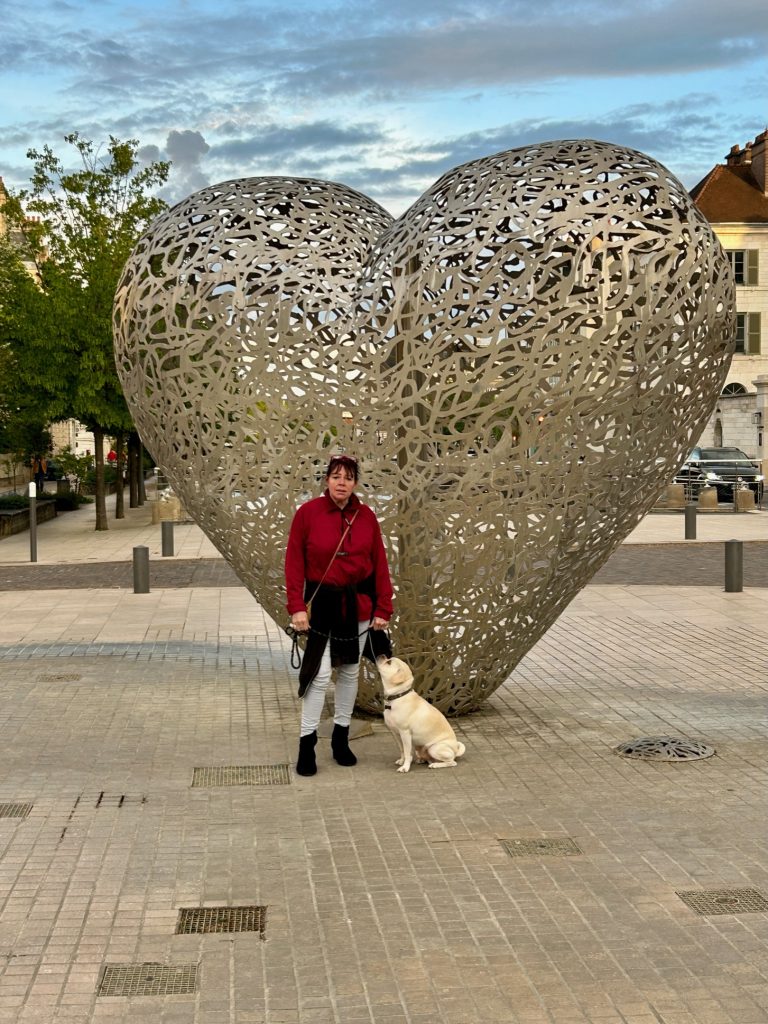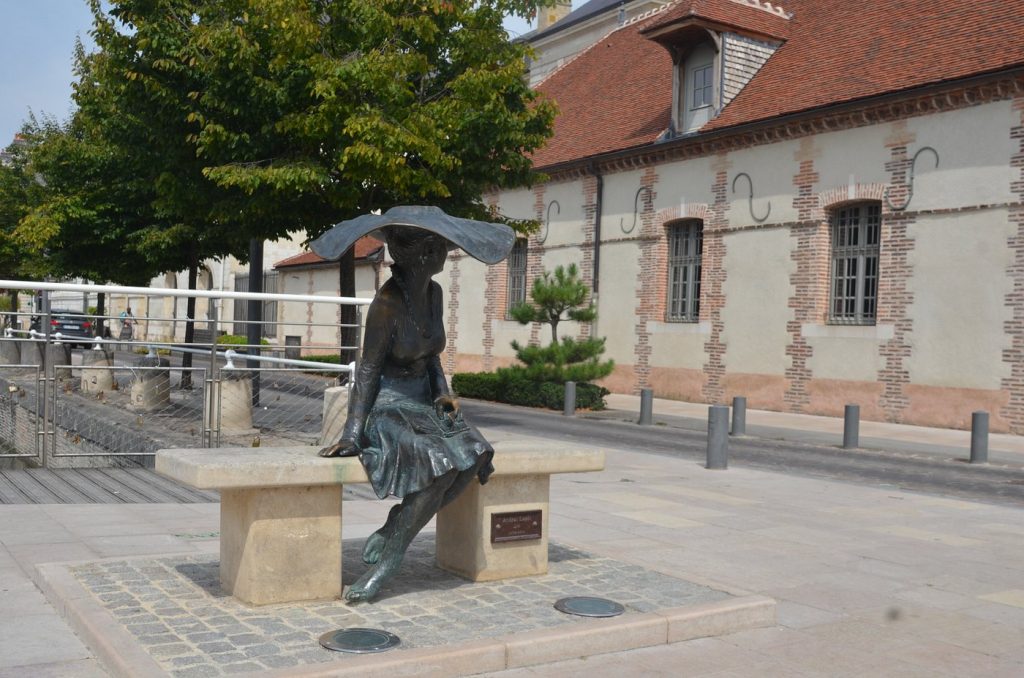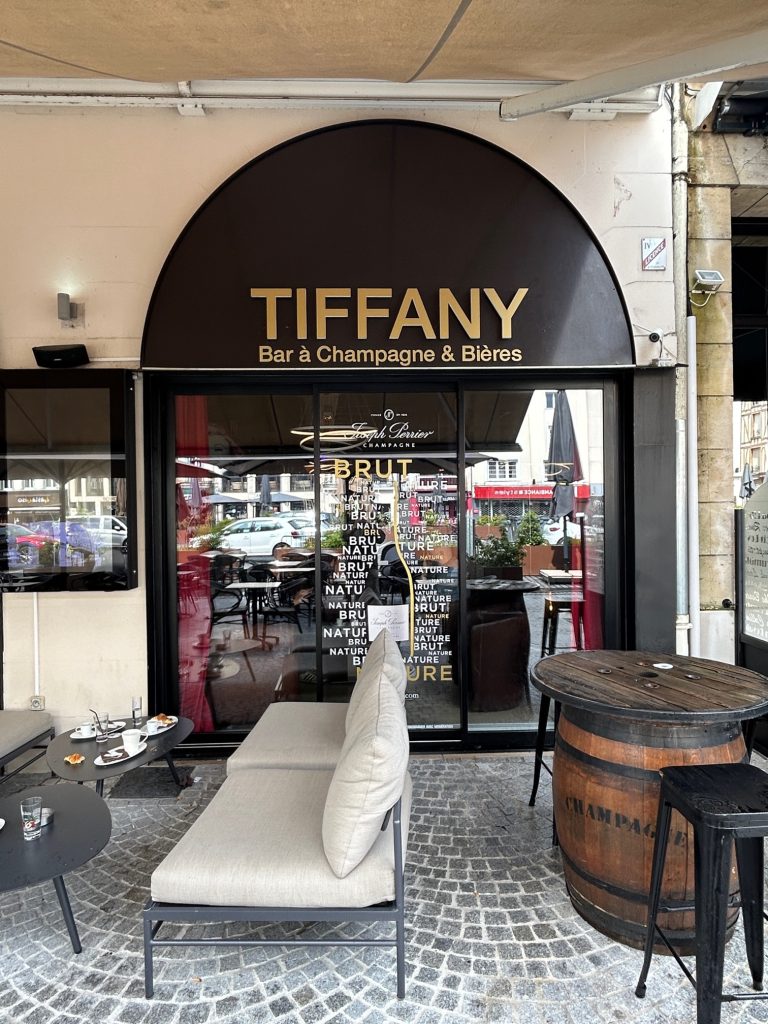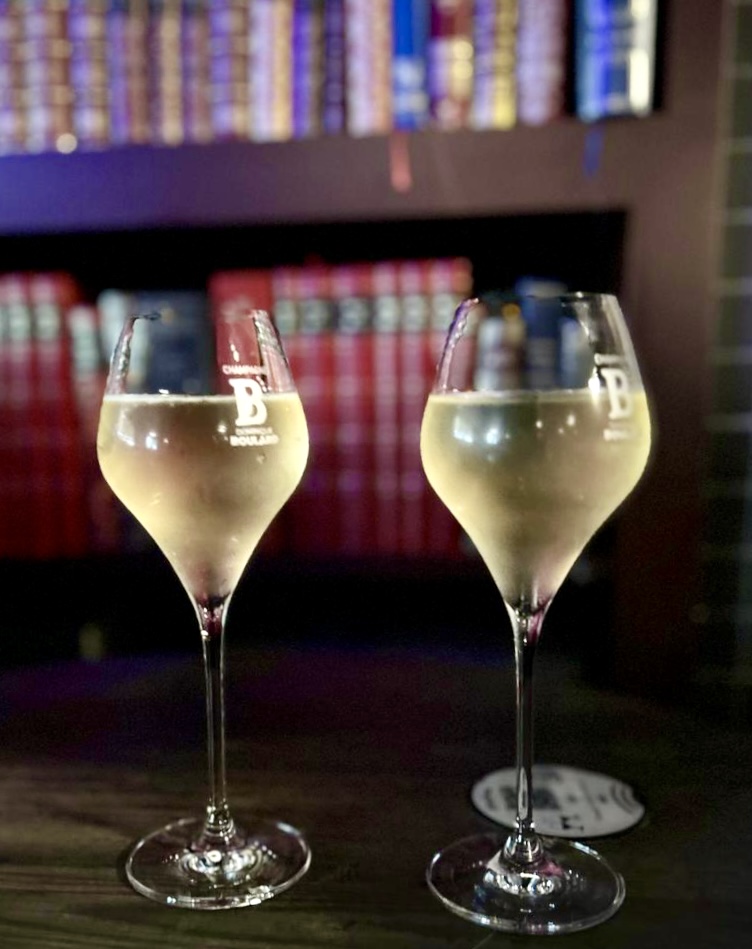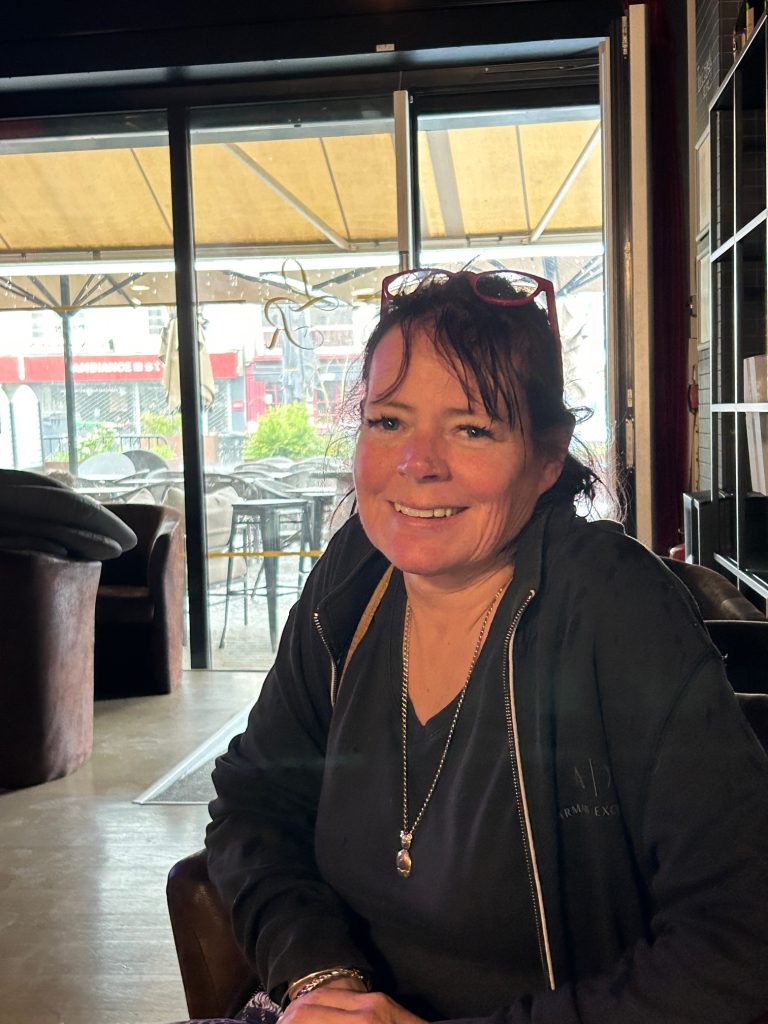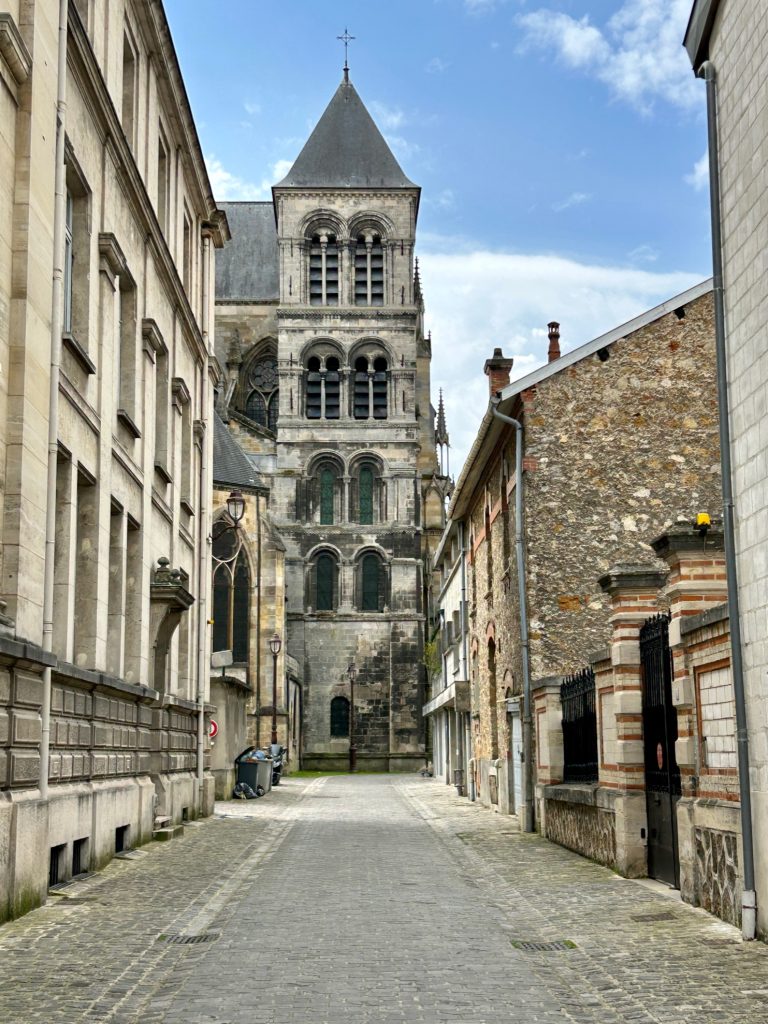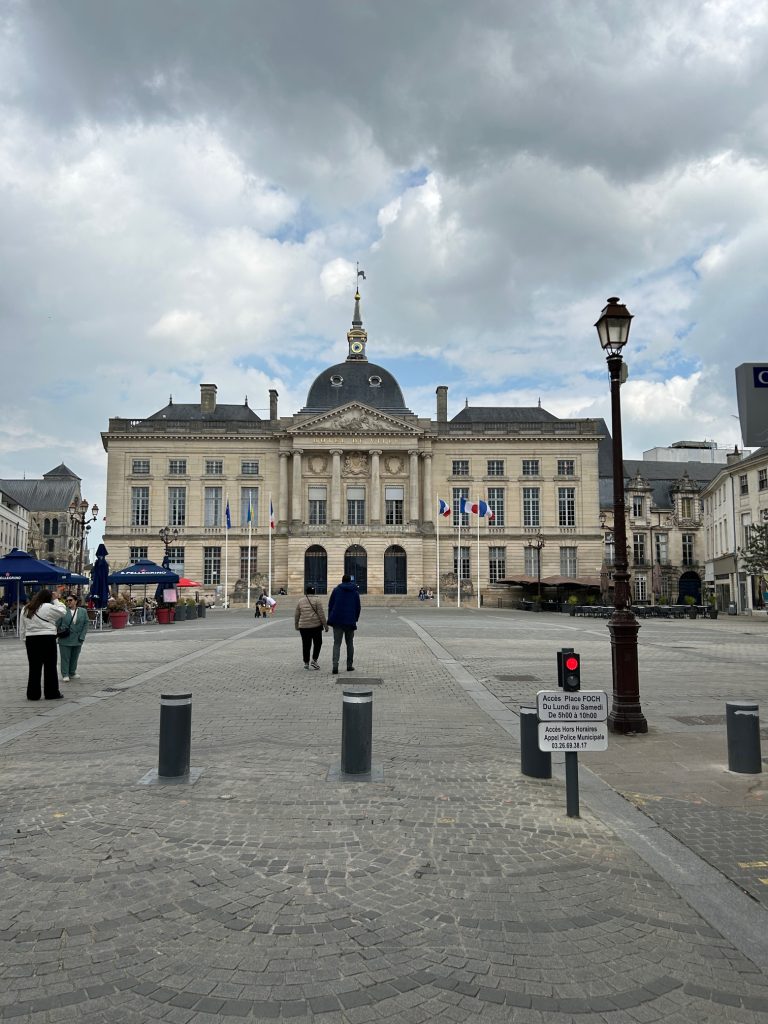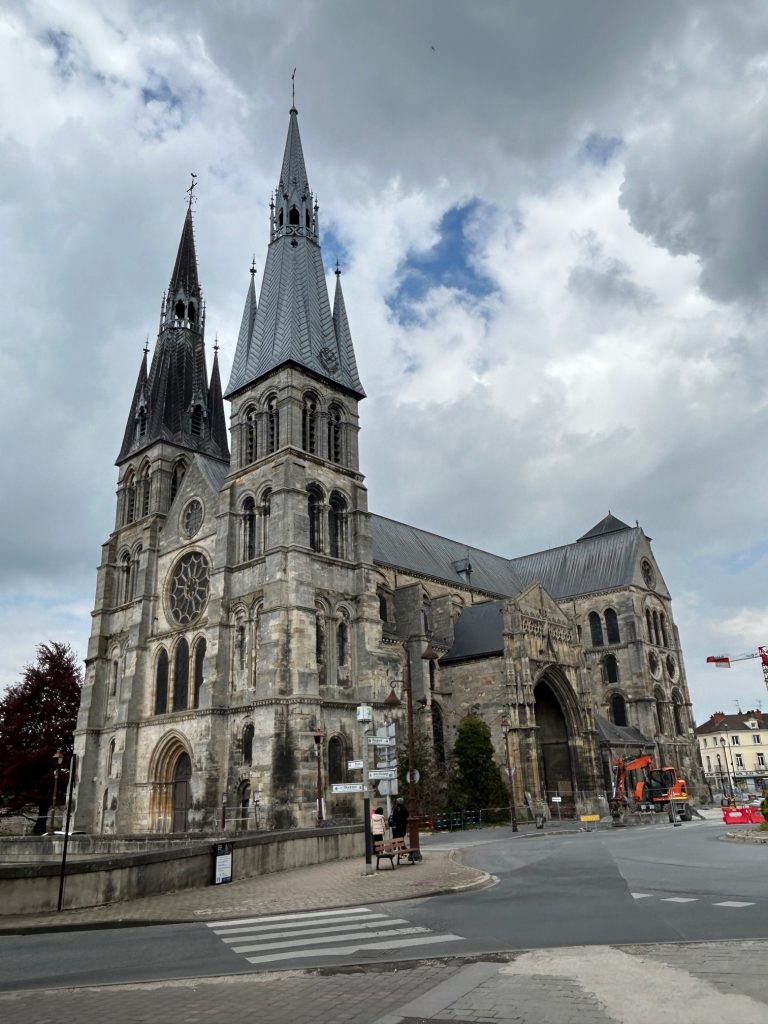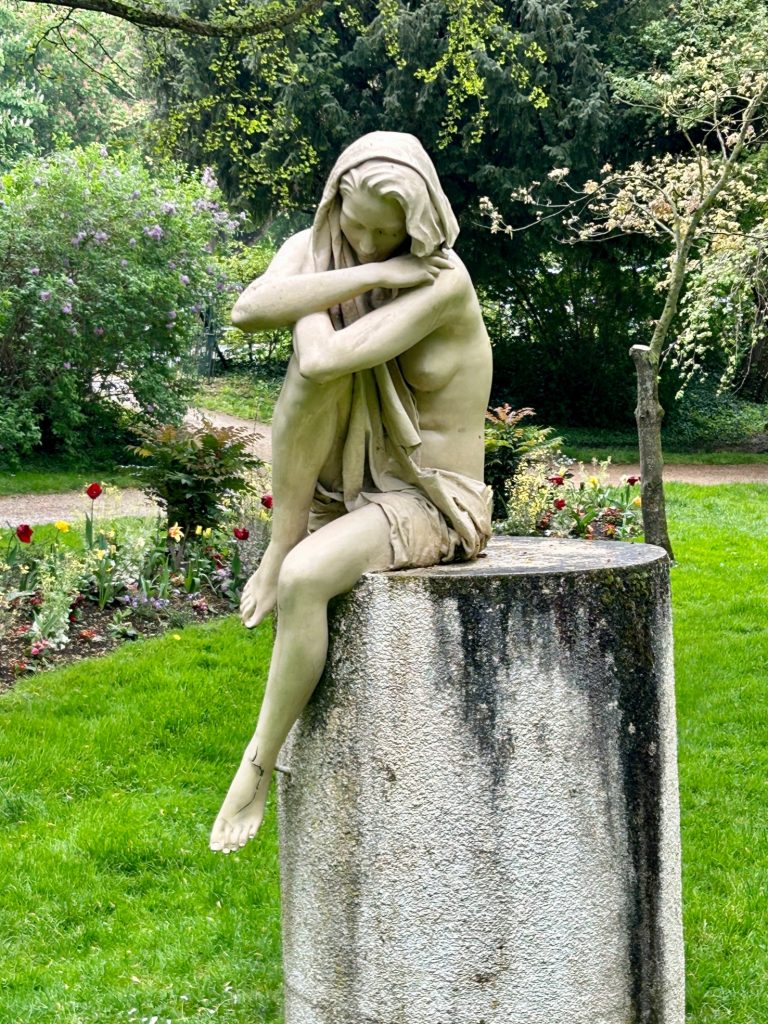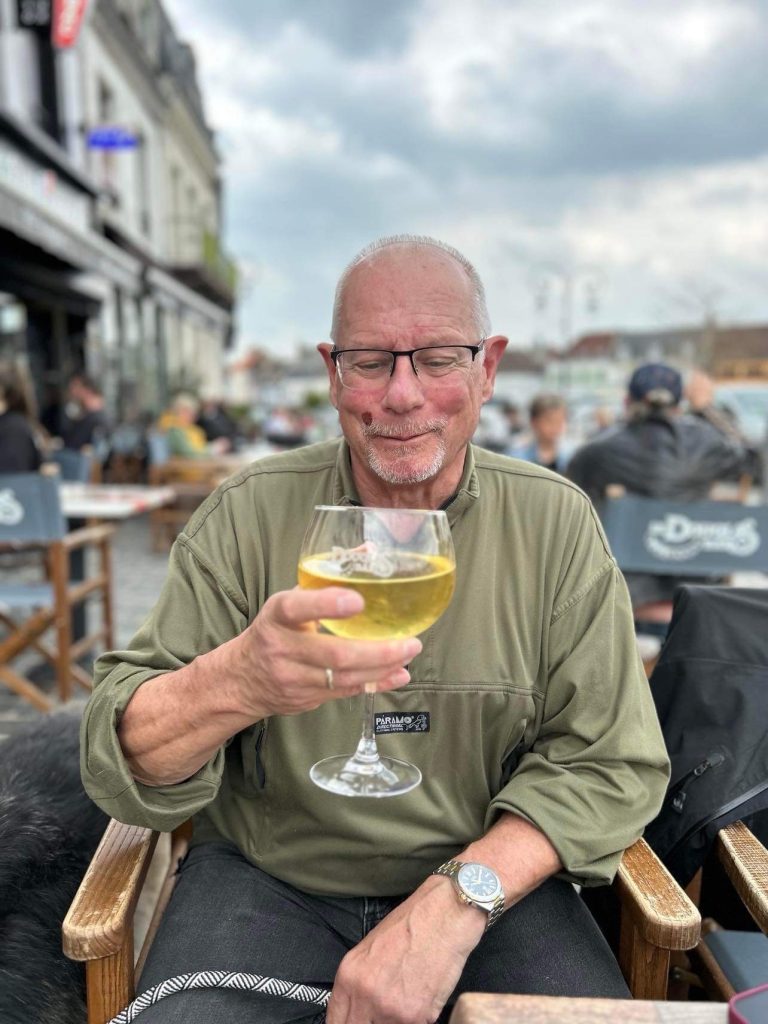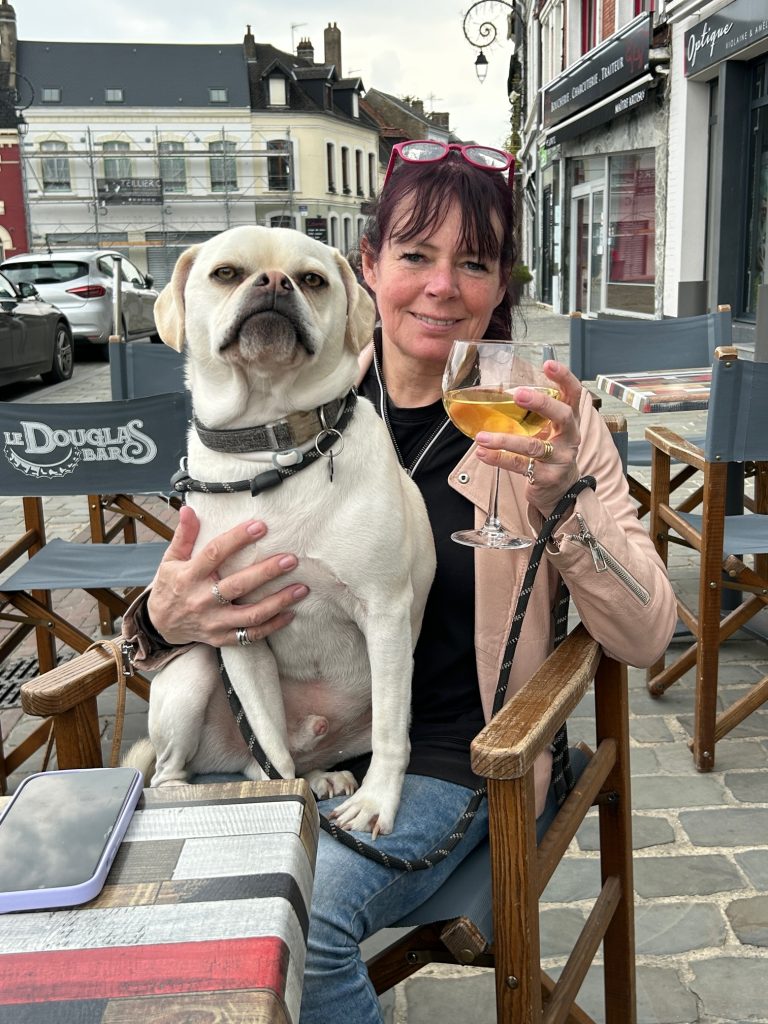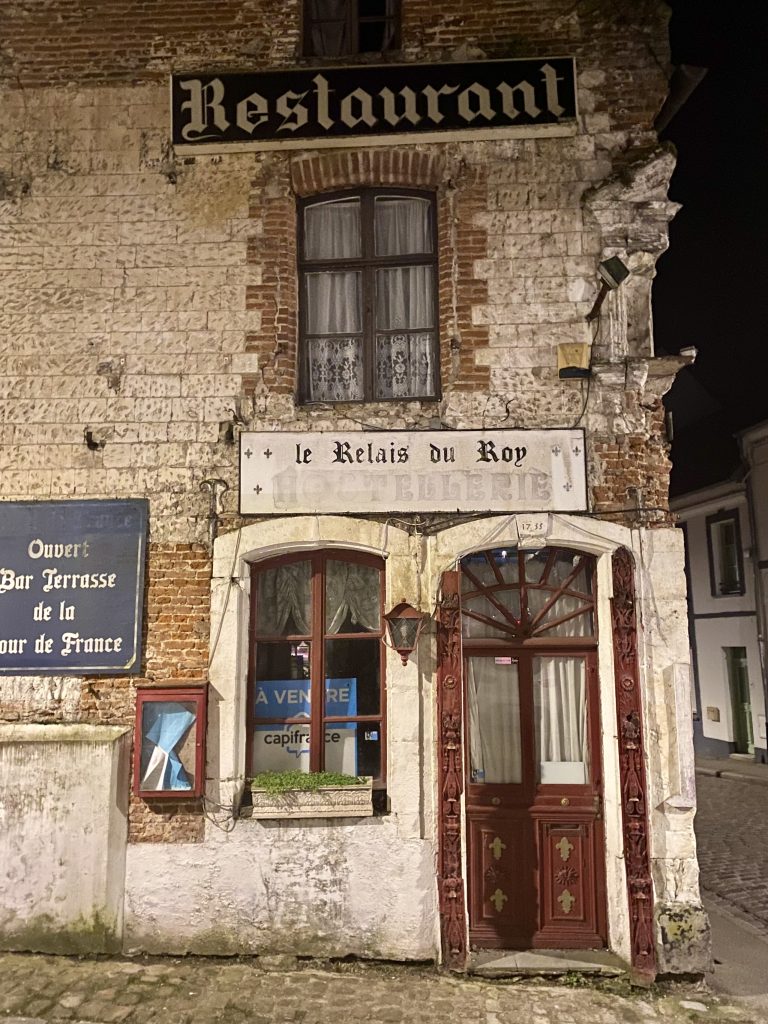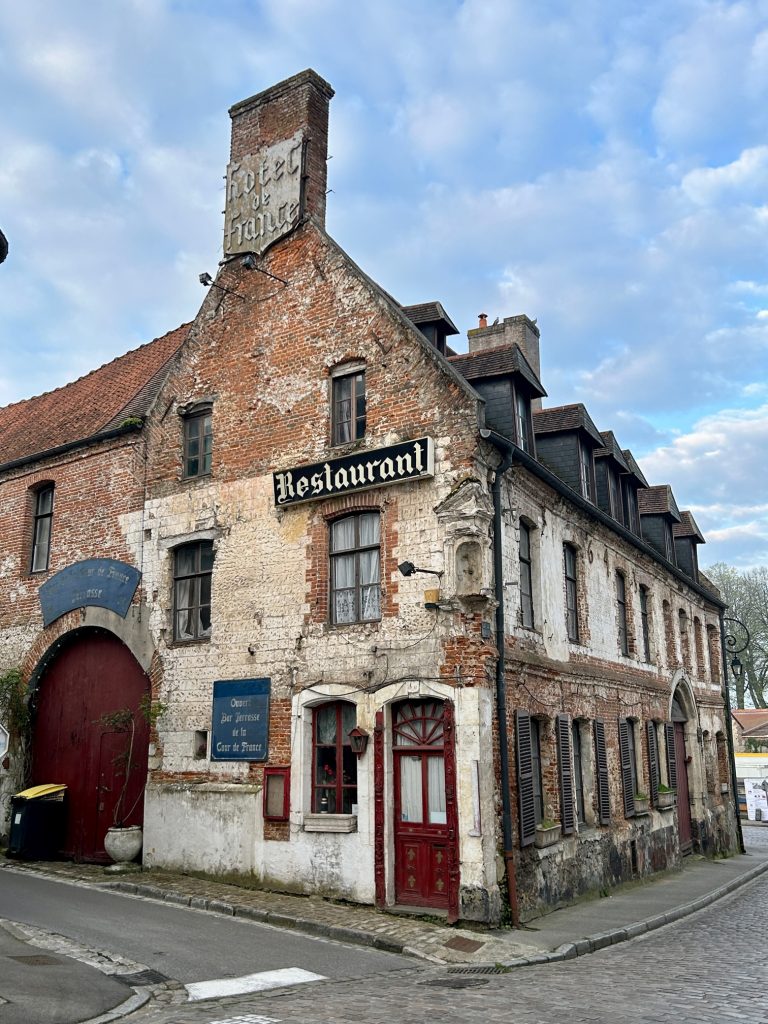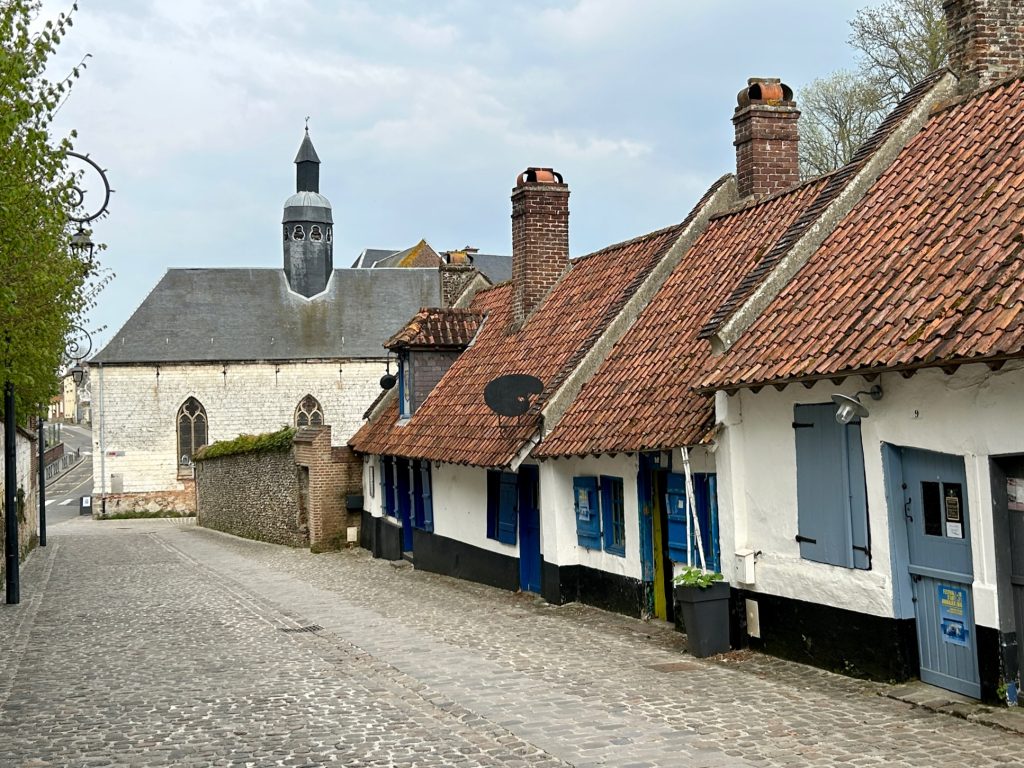We wouldn’t have come to Le Puy en Velay (it’s not Vanya’s kind of place) except that I thought there was to be a preview of the “Puy de Lumieres” (light show) while we were there. In fact, it is to be previewed in two weeks time with the main event running in July and August. The preview weekend is the best time to visit because you get to experience the full event without the large crowds which are standard during the French holidays. For the unaware, eight of the principal sites in Le Puy are lit up during the “Puy de Lumieres” in the most vivid colours for at least two hours every night and a spectacular light and music show follows. Those sites lit up include the cathedral, museum, theatre, town hall, the old bridge over the Loire and most impressive of all, the complete Rock and Chapel of St Michael.
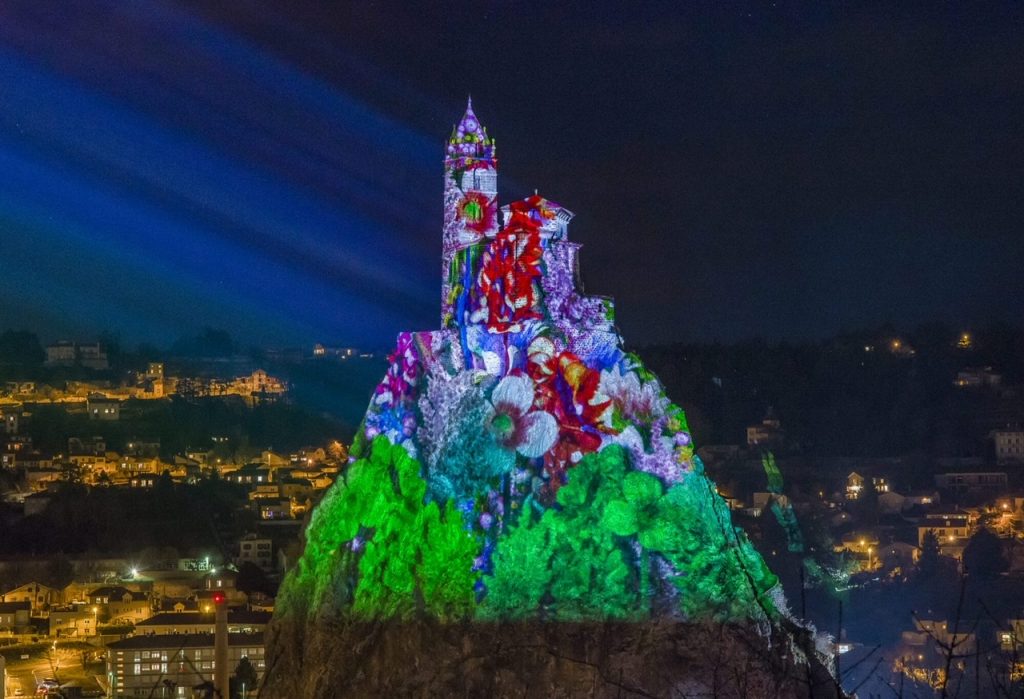
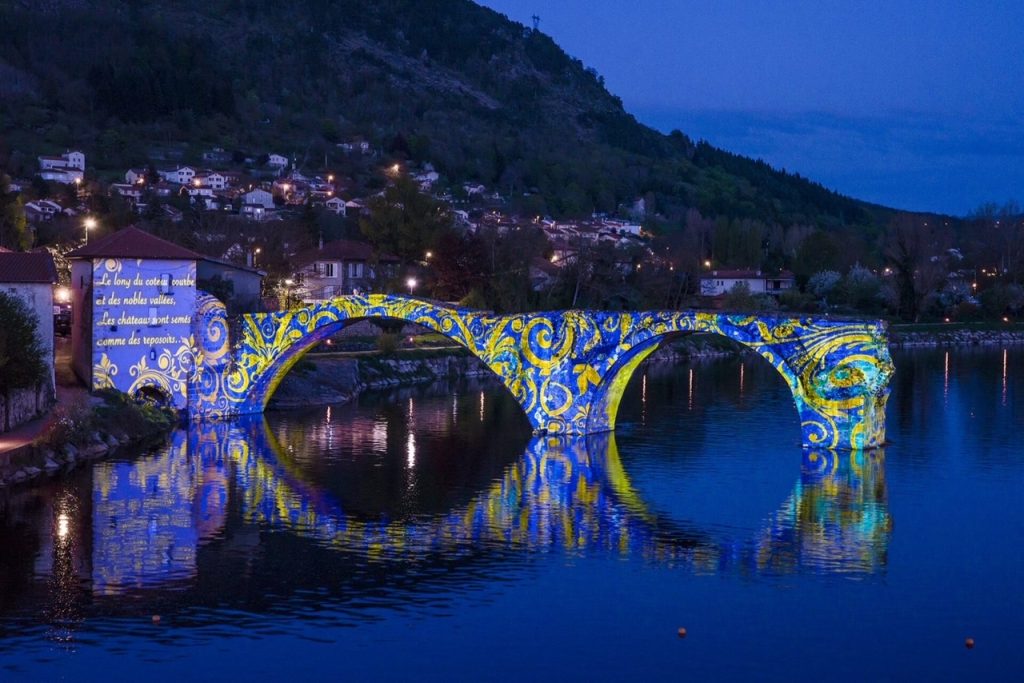
Two sites lit up in Le Puy during a previous Puy de Lumieres
No matter, many of Le Puy’s principal sites are still worth seeing even without the light show and you can buy tickets from the local tourist office and from the sites themselves which offer discounts when visiting three or more locations. I bought such a ticket (I think it cost me 10 Euros) and this allowed access to the three locations which most interested me:-
Le Rocher et Chapelle Saint-Michel d’Aiguilhe: This is Saint Michael’s Chapel built up on a volcanic rock known as the needle. You only have to look at the rock to see the association with a needle. The chapel was built in 961 upon the instructions of the local Bishop after he had completed a pilgrimage to Santiago de Compostela It’s a short sharp walk up a staircase to the chapel itself and well worth the effort. The views over the town are tremendous.
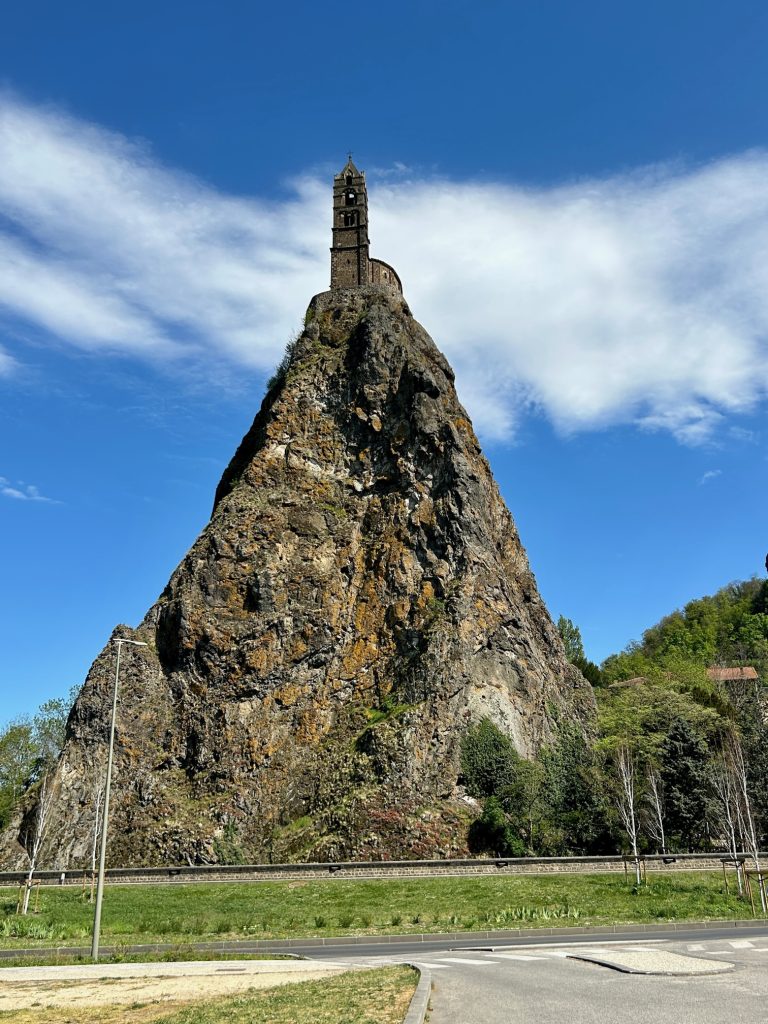
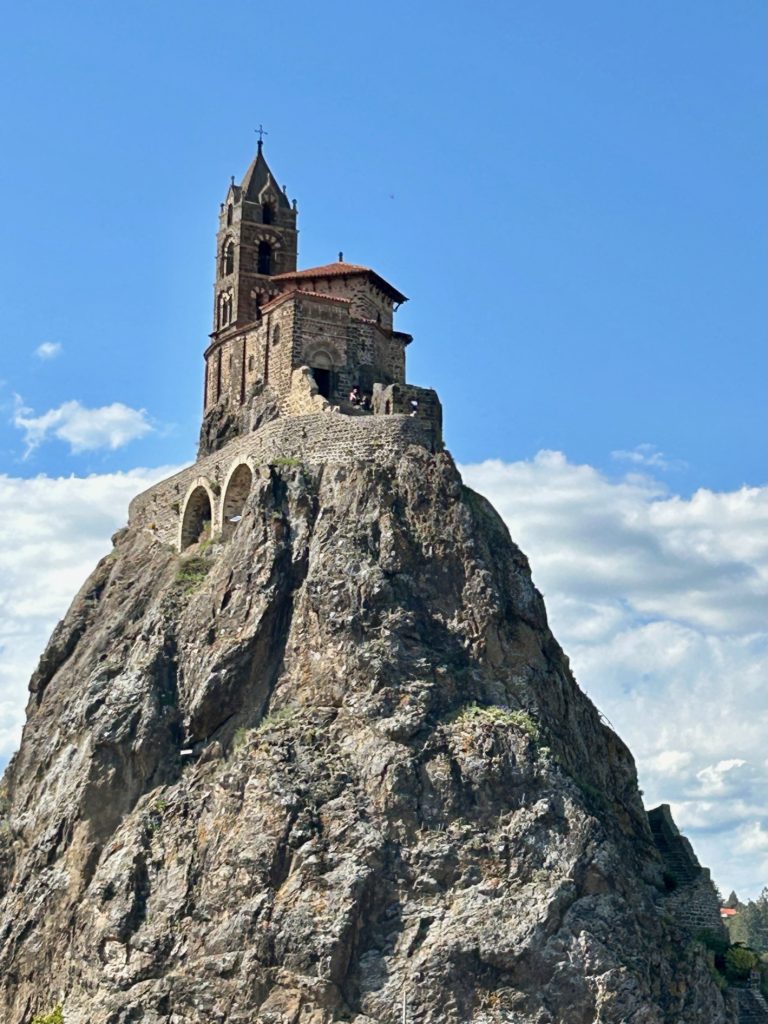
Two photos I took of the outside of the chapel…
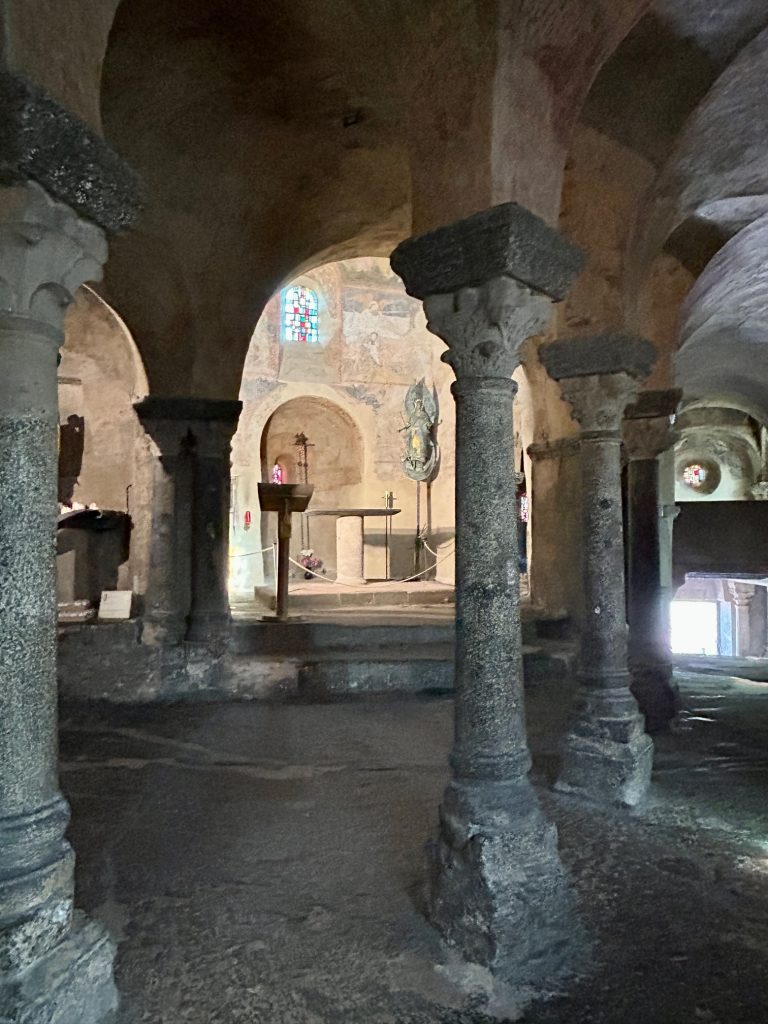
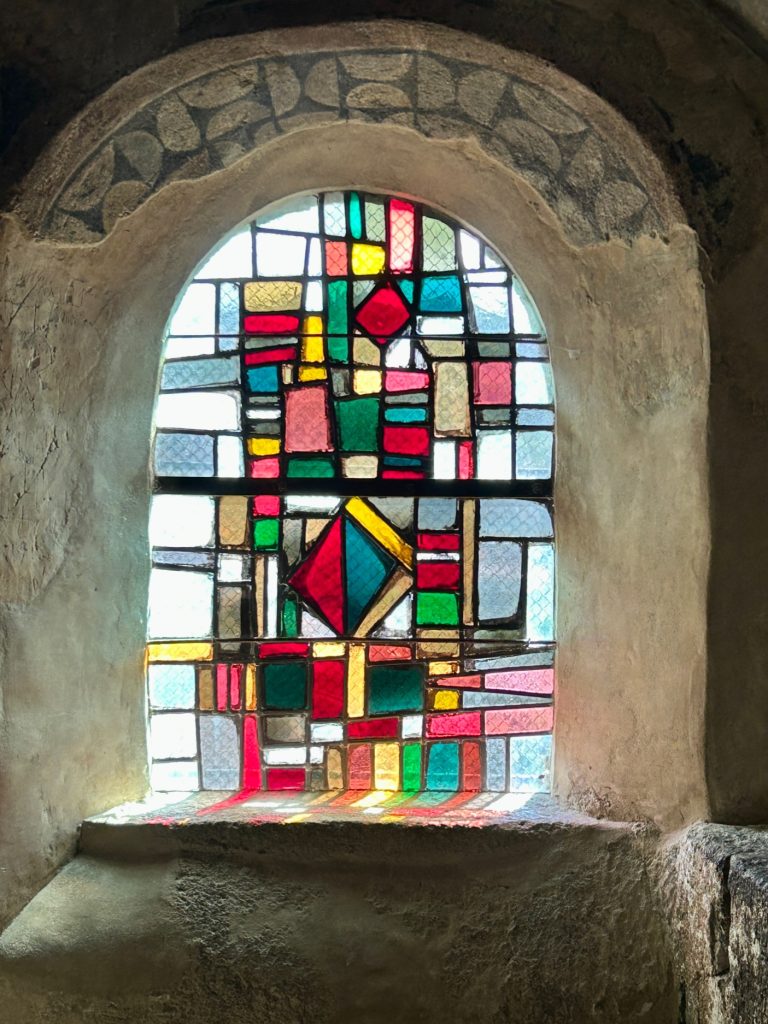
… and inside
Rocher Corneille et Statue Notre Dame de France: The Statue of Our Lady of France has been built on the town’s highest point (another volcanic rock, this one some 757 metres high). The statue is made from the metal of 213 Russian cannons seized during the Crimean War. You can climb up inside it and there are a few small windows. One of the advantages of visiting outside of the holiday season is that I had the place almost to myself and was able to open one of the windows.
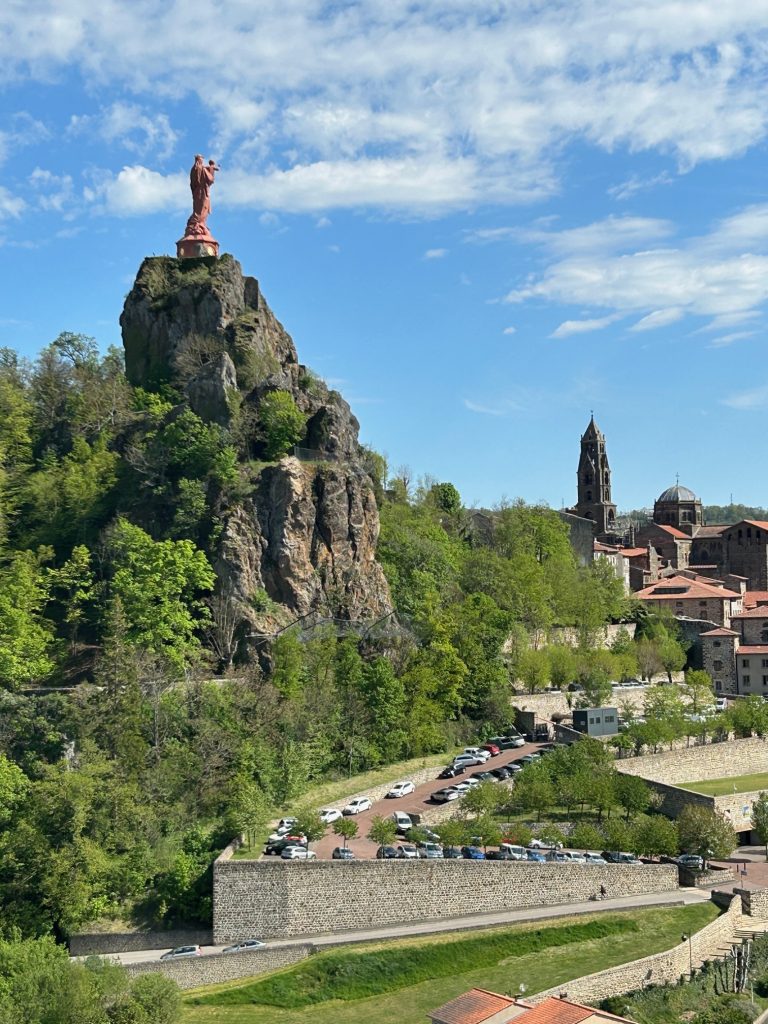

The Statue of Our Lady
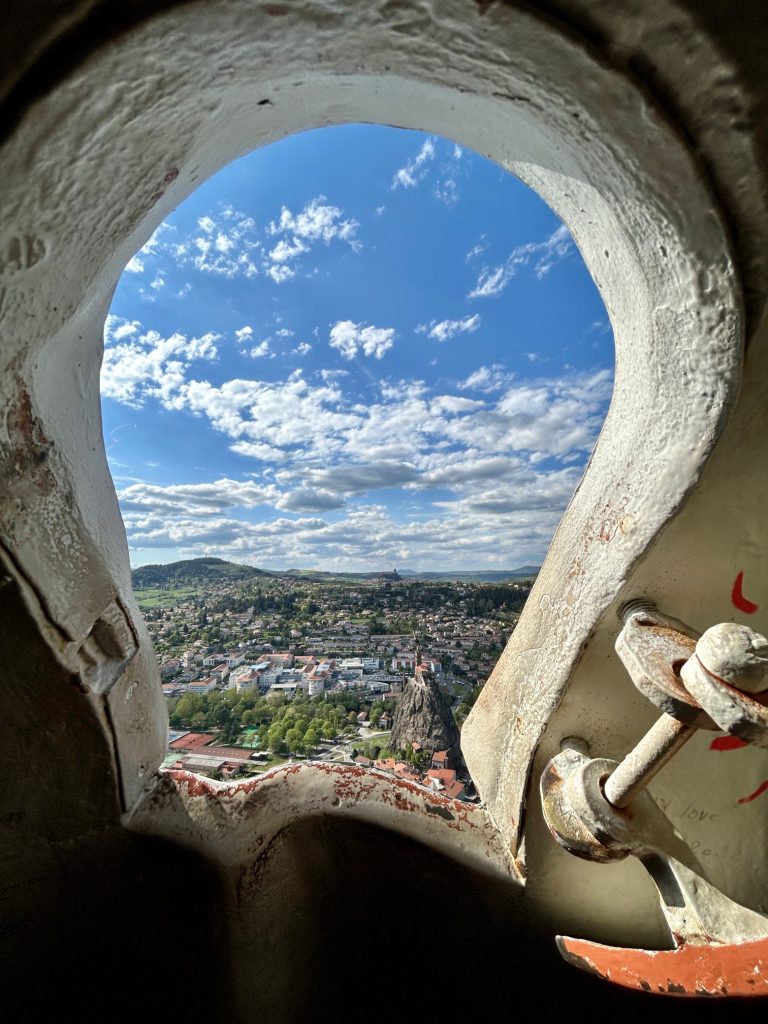
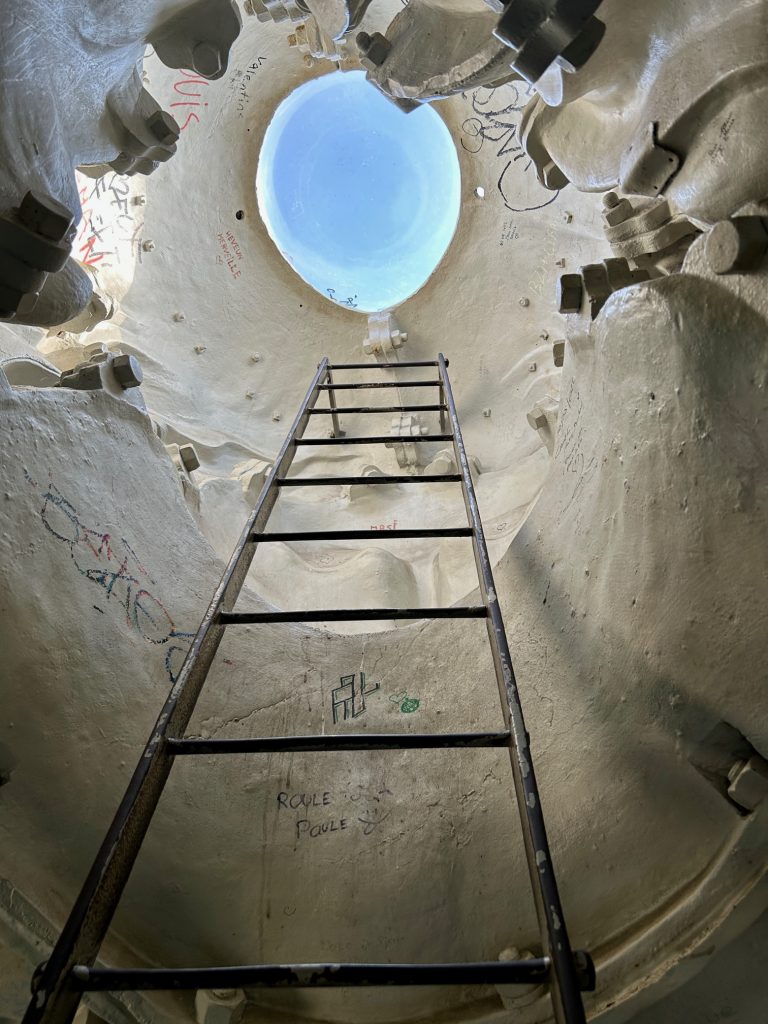
Inside the head of the Statue of Our Lady.
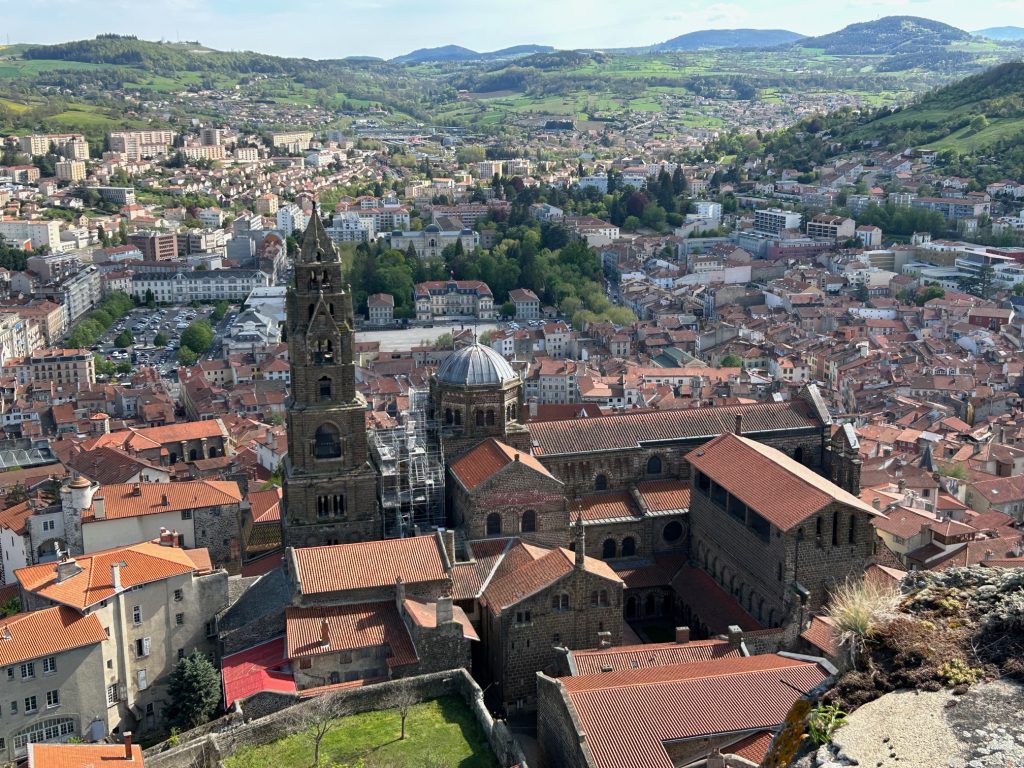
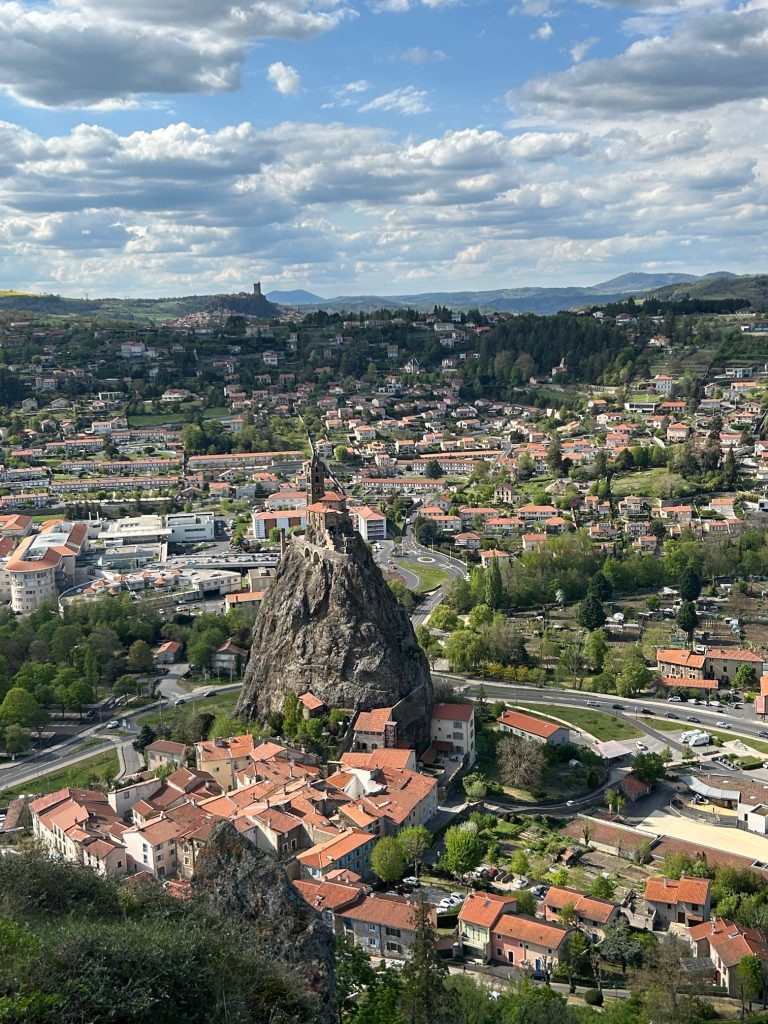
A couple of views from the viewing platform, one down on to the Cathedral and the other over to the needle.
The Cathedral of Our Lady: This 11th-12th century Romanesque cathedral complex (the starting point of the Via Podiensis pilgrimage route to Santiago de Compostela) has been a UNESCO World Heritage site since 1998. It contains many interesting features including an unusual 134 staircase leading up to the front door, a statue of the Black Virgin, 12 century cedar wood doors and some quite beautiful cloisters. Unfortunately, I didn’t get to see everything I wanted to see of the Cathedral. It closed for the day as I arrived.
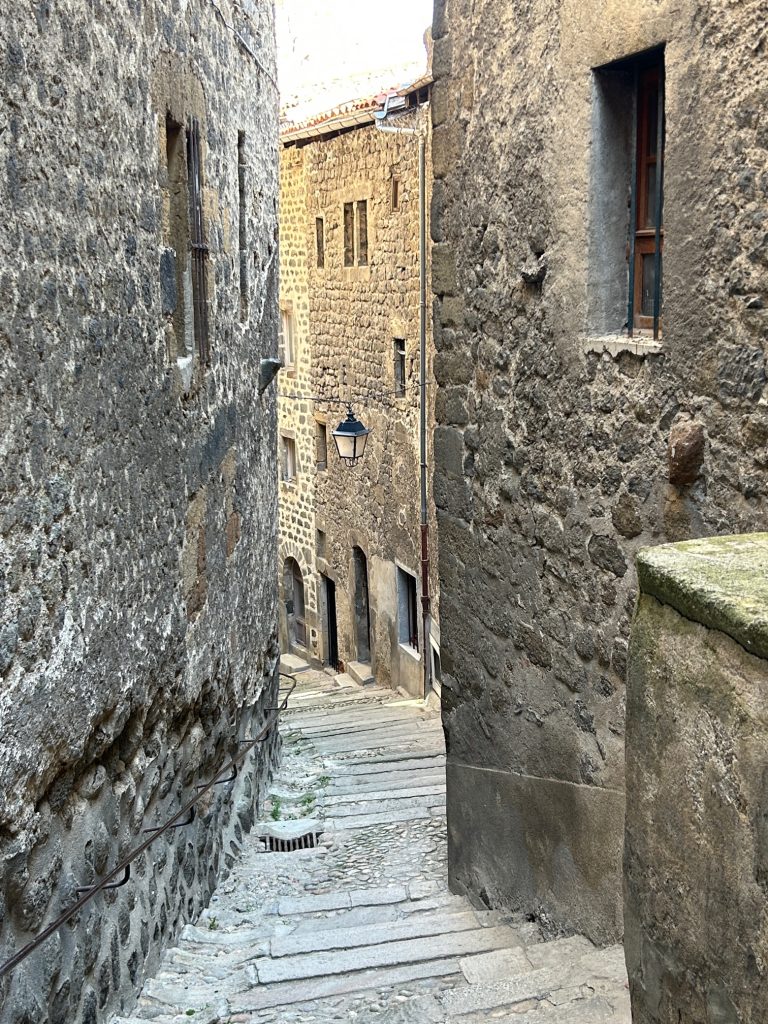
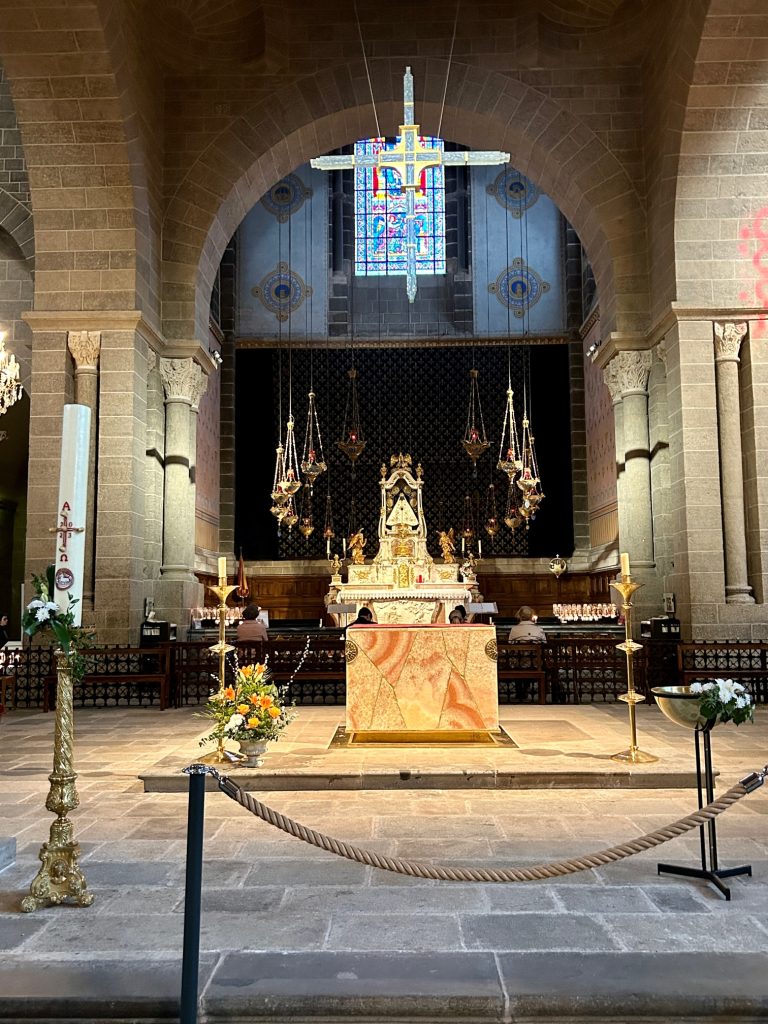
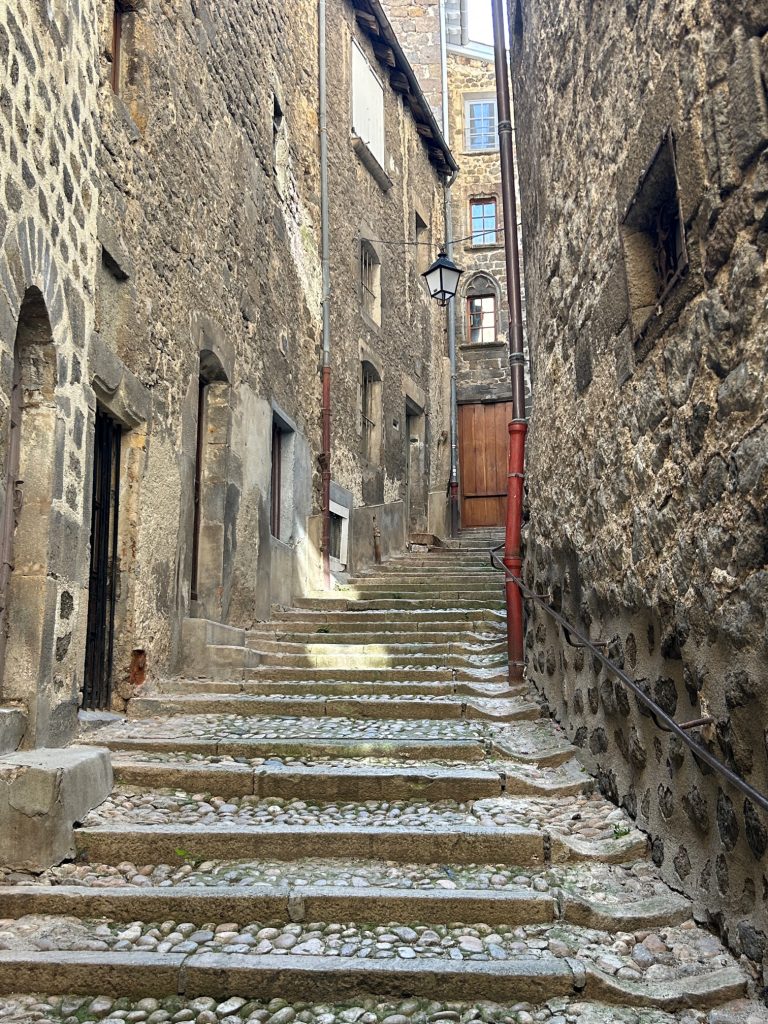
Walking down through the old down past the cathedral and on into the commerciual part of the town.
Later in the day, just as it was getting dark, Vanya and I made our way back into Le Puy from our campsite on the edge of the town (almost directly underneath the Aguilhe) and, even without being lit up by the aforesaid Puy de Lumieres, some of the sites/sights looked impressive although; overall, Le Puy doesn’t really do it for either of us. It struck us as a dirty and untidy place and, having seen most of the three monuments that I wanted to see, I’m not convinced that either of us would return.
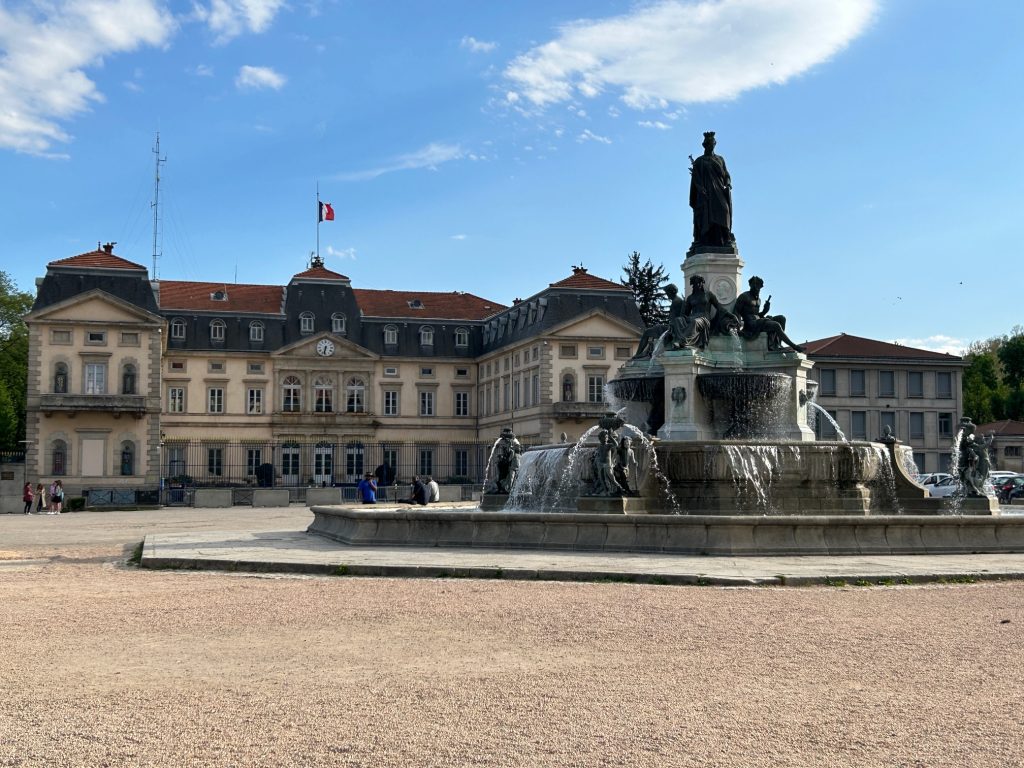
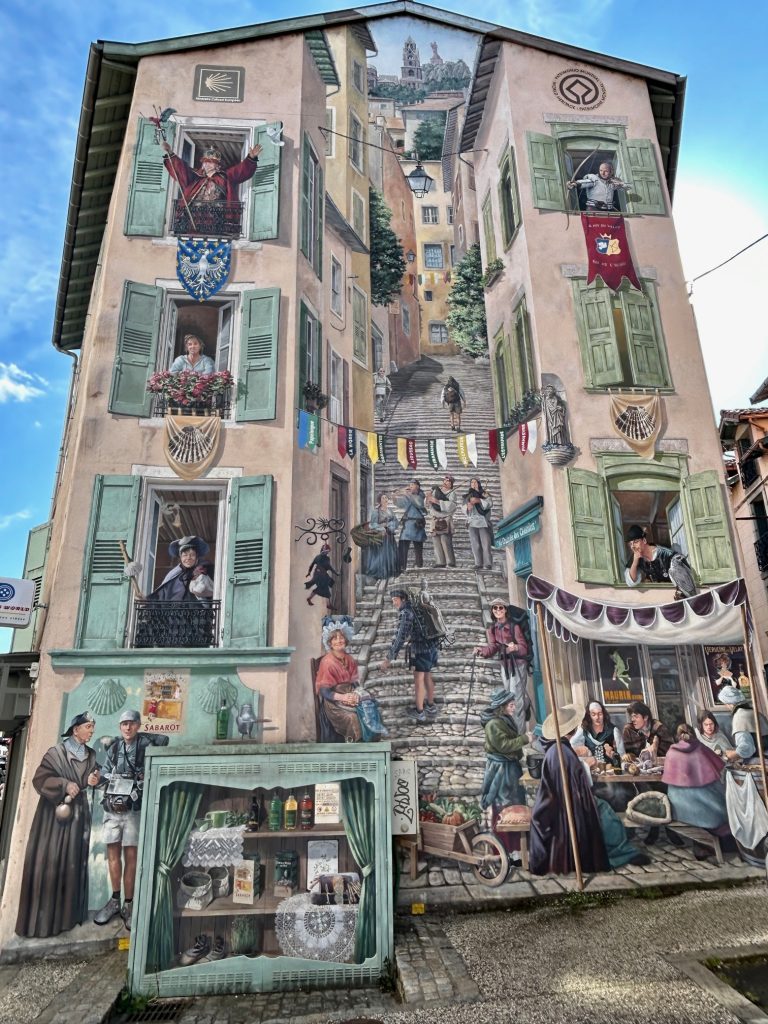

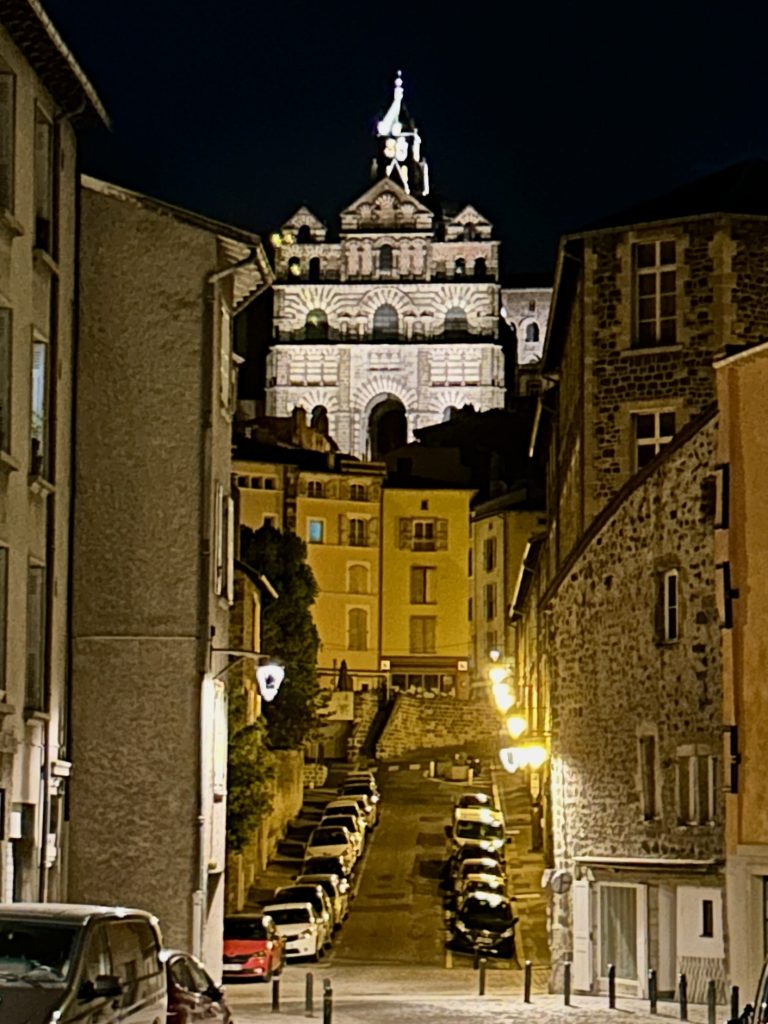
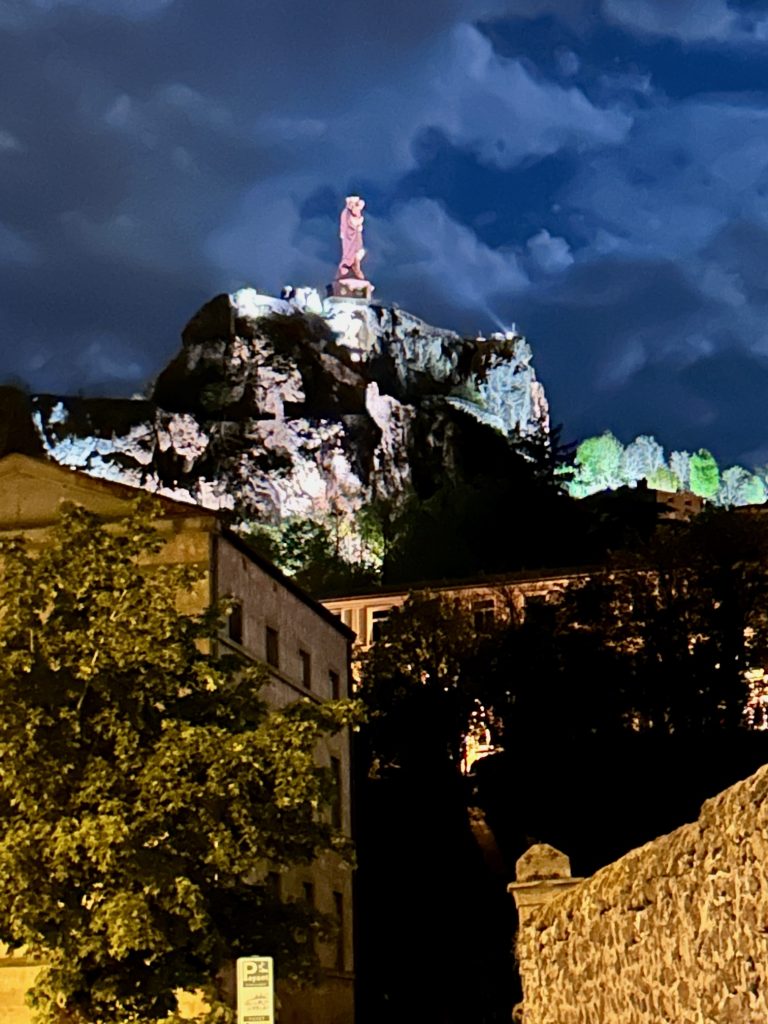

Apologies. It’s 4 June 20023 as I finish writing this short entry about Le Puy en Velay and we visited the town almost a month ago. We are now back in England and, once again, I have been remiss in terms of keeping up with my blog. Needless to say, any further entries as to Tour 7 will also be more than a month out of date but, I’ll do my best to make up this record.

